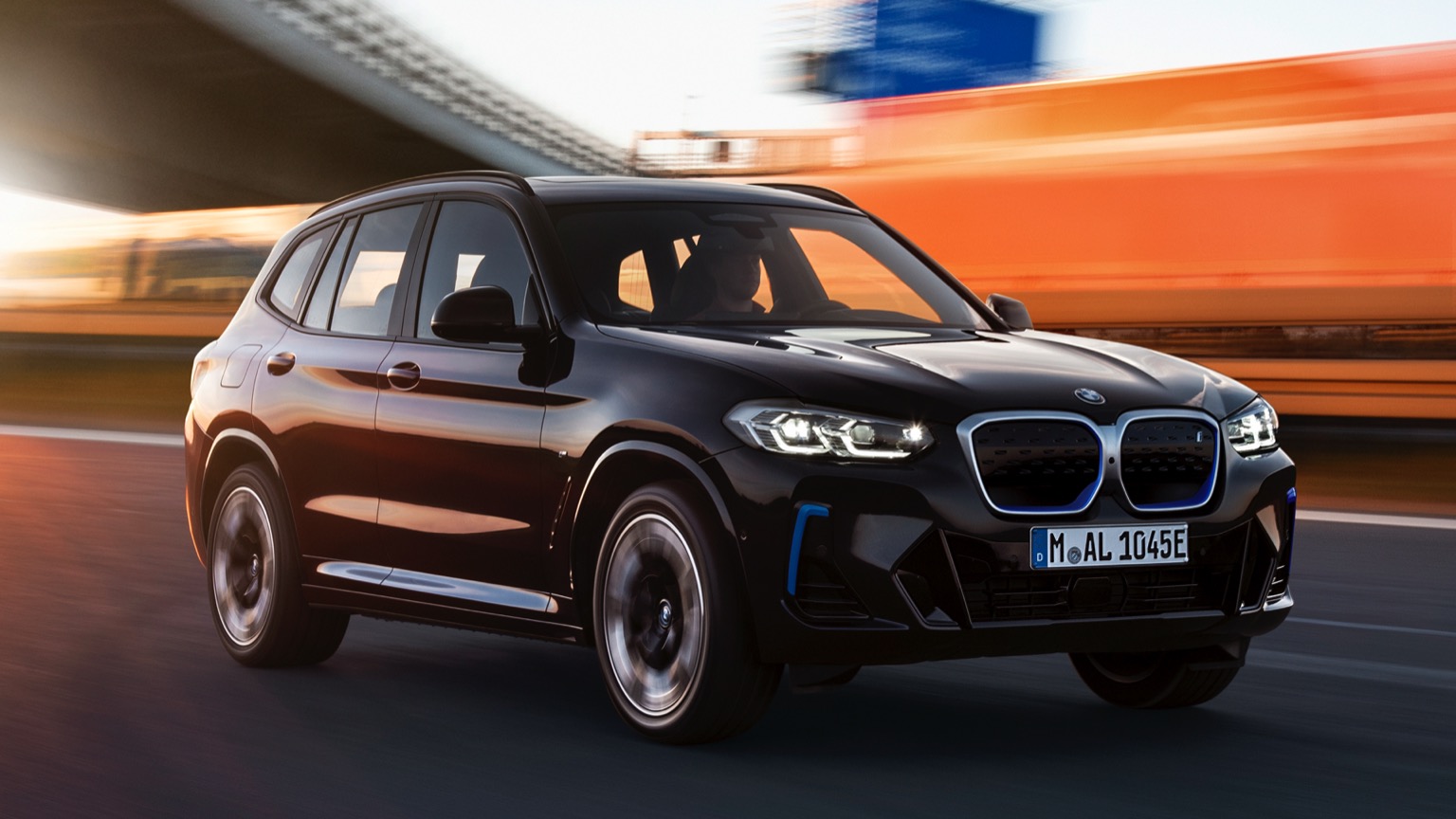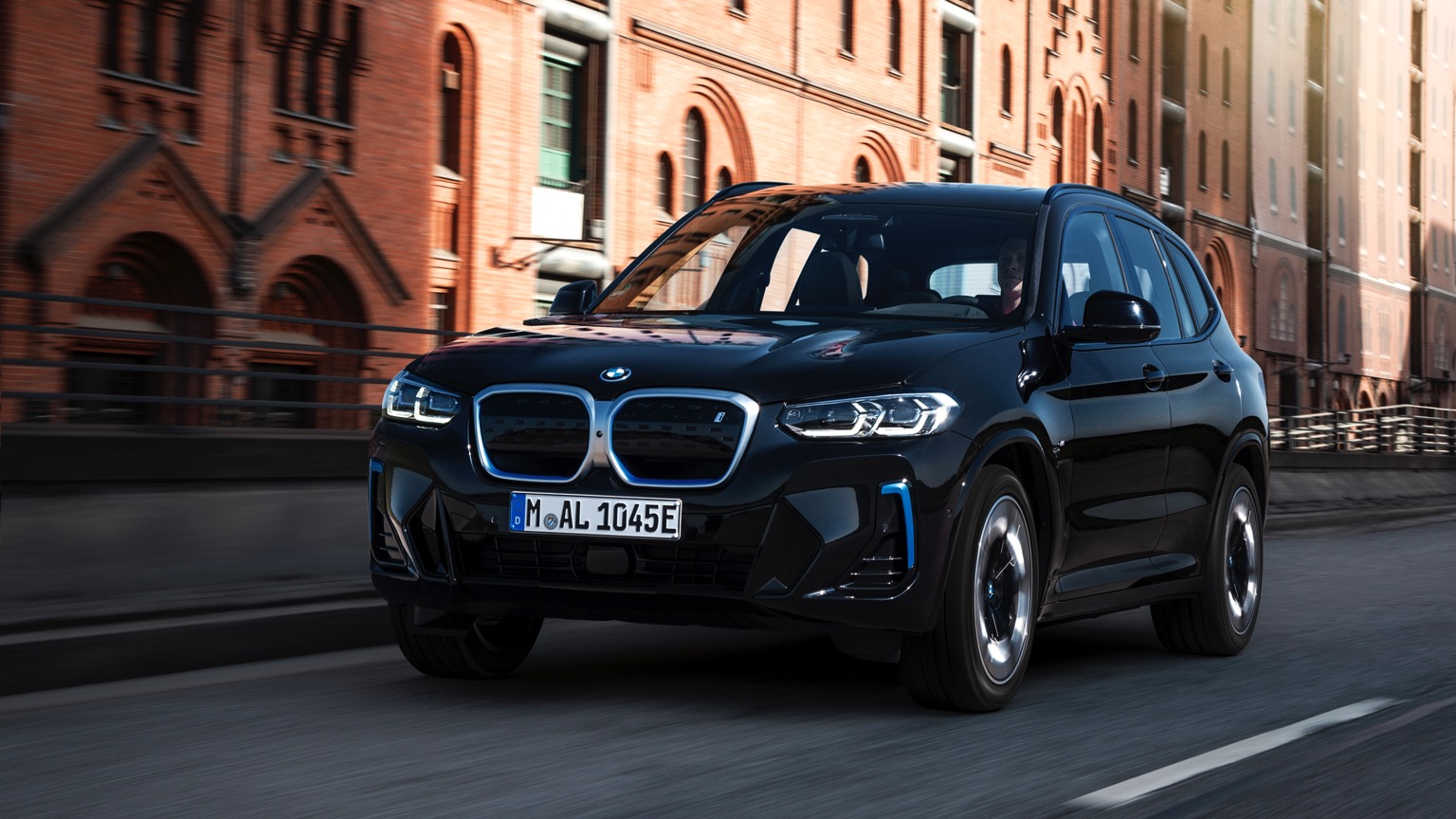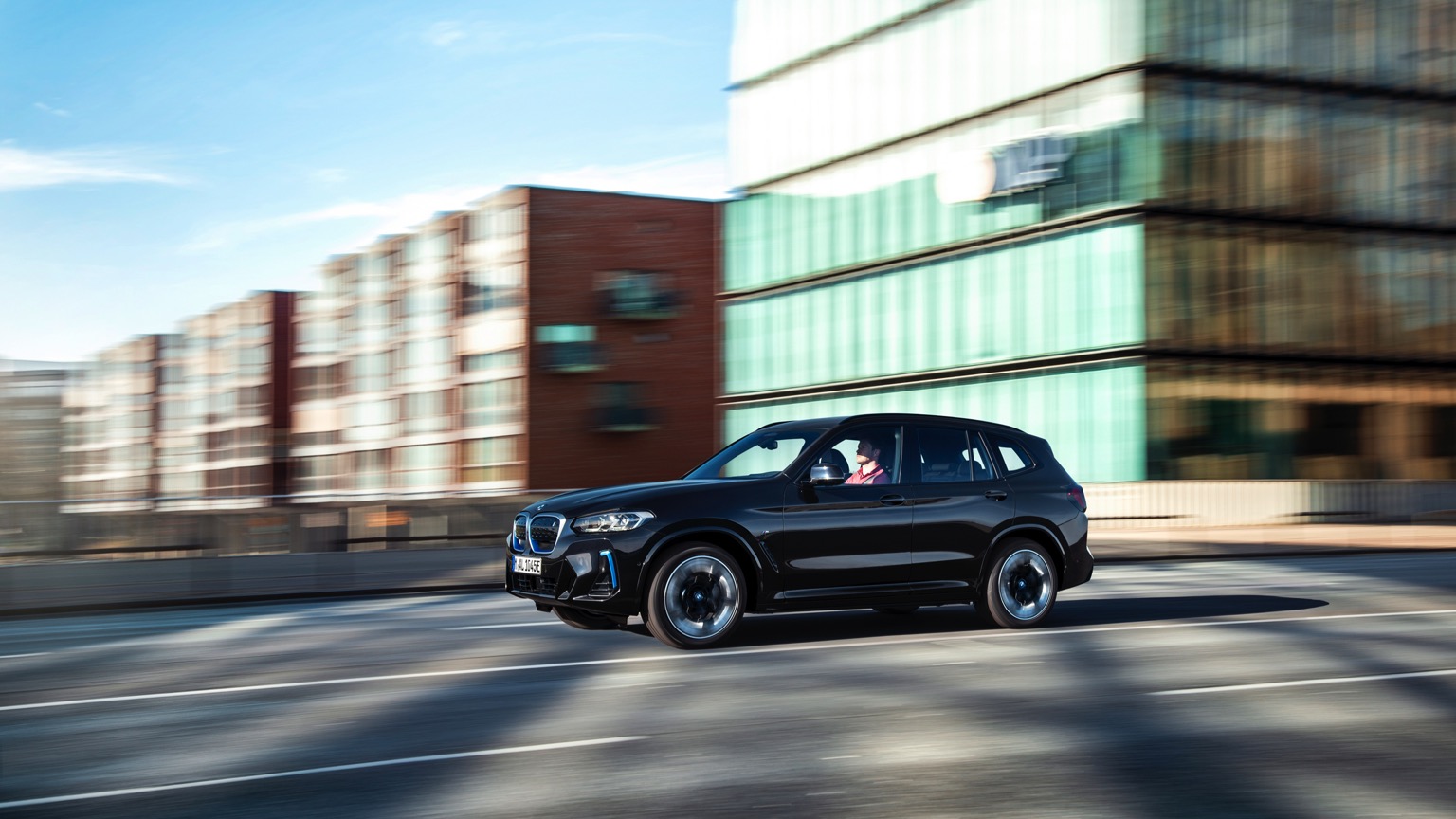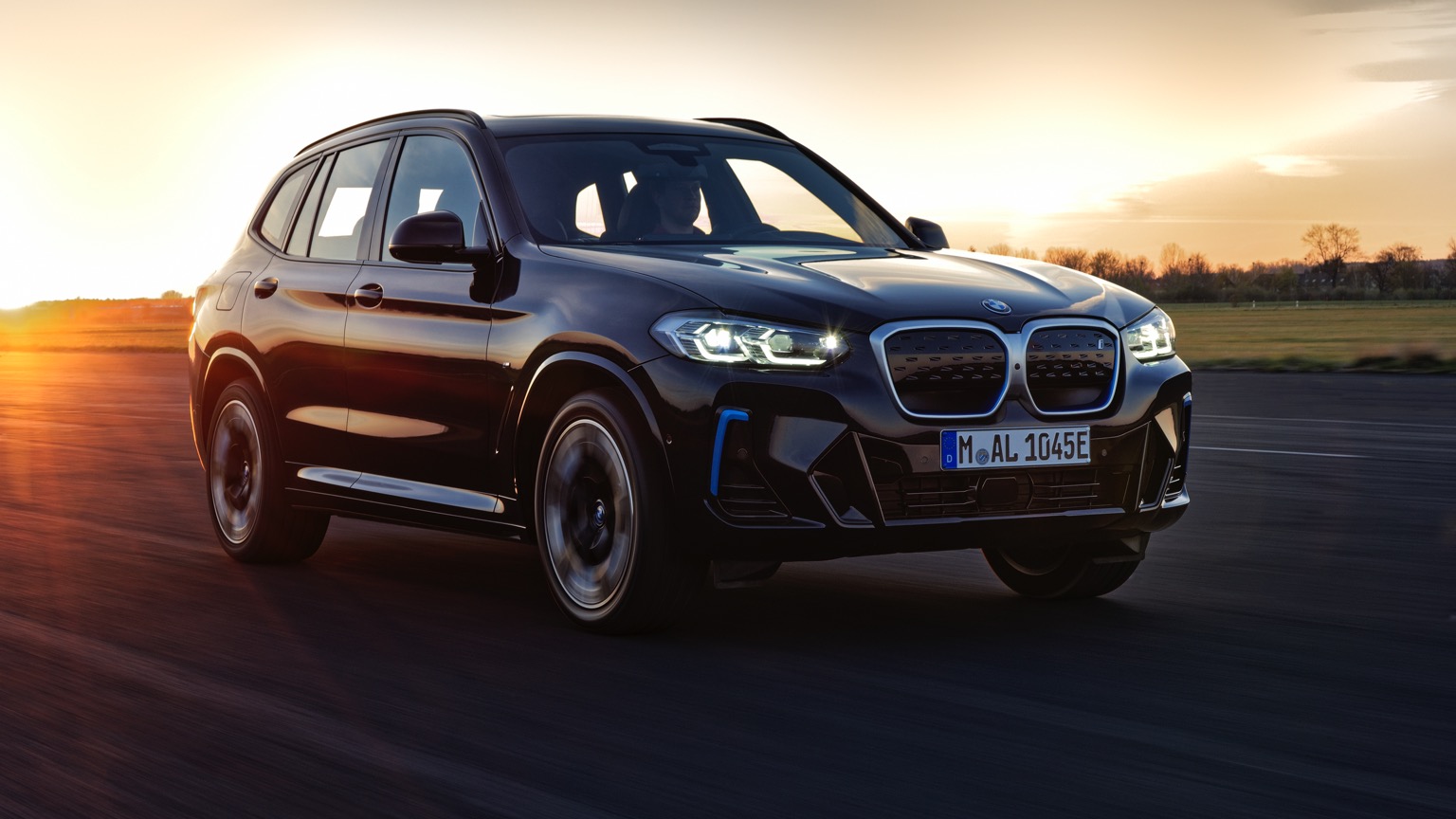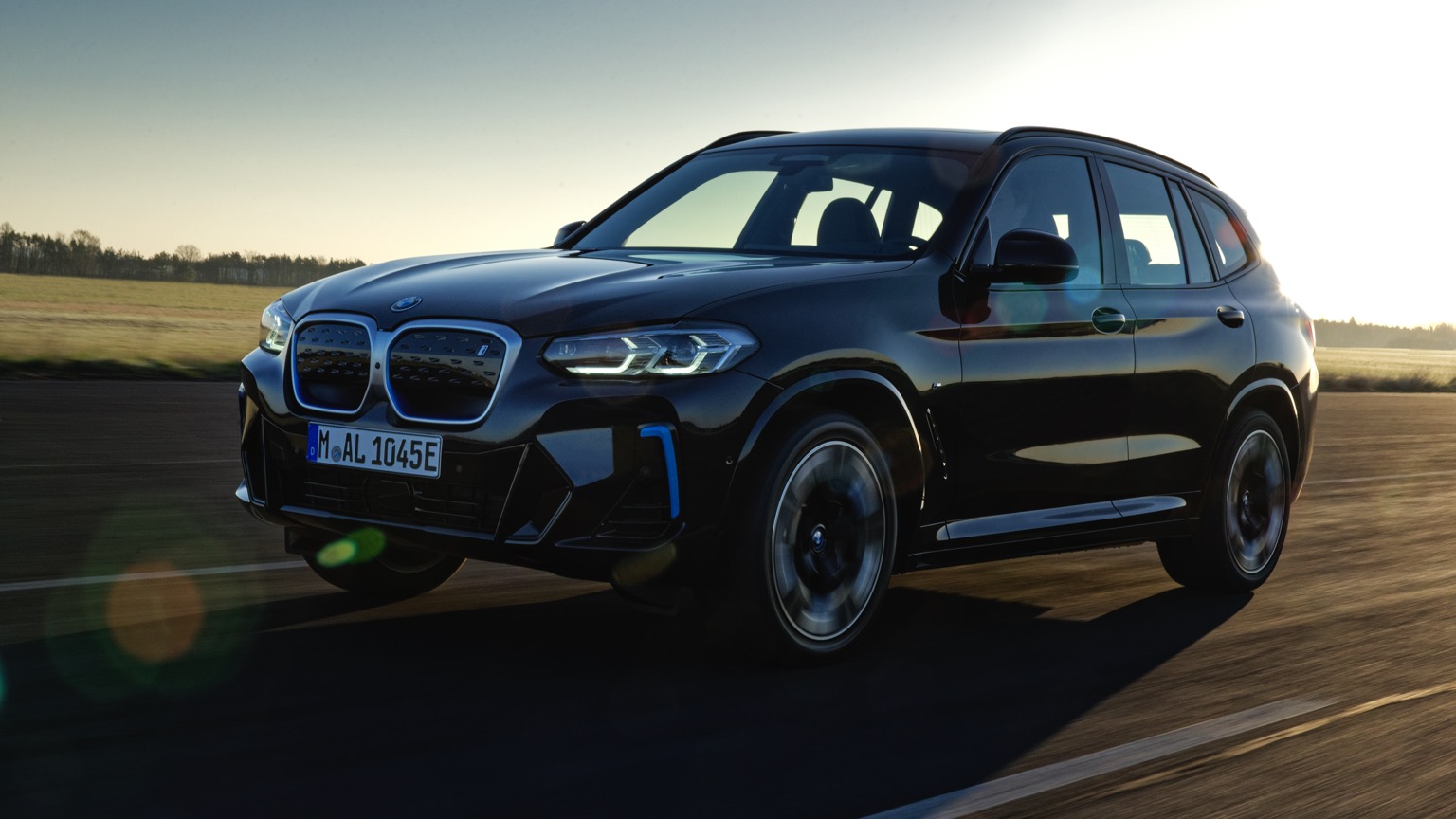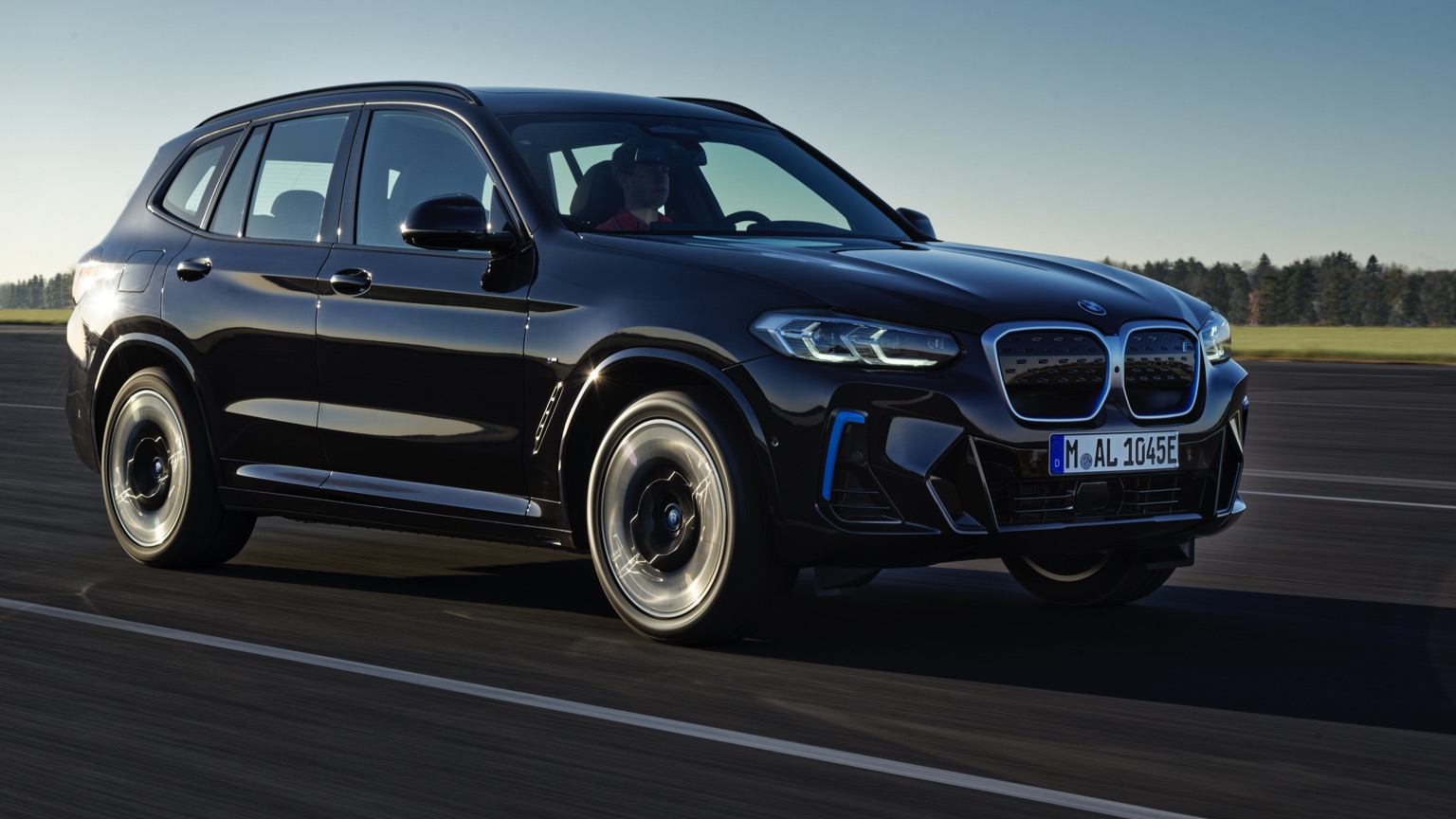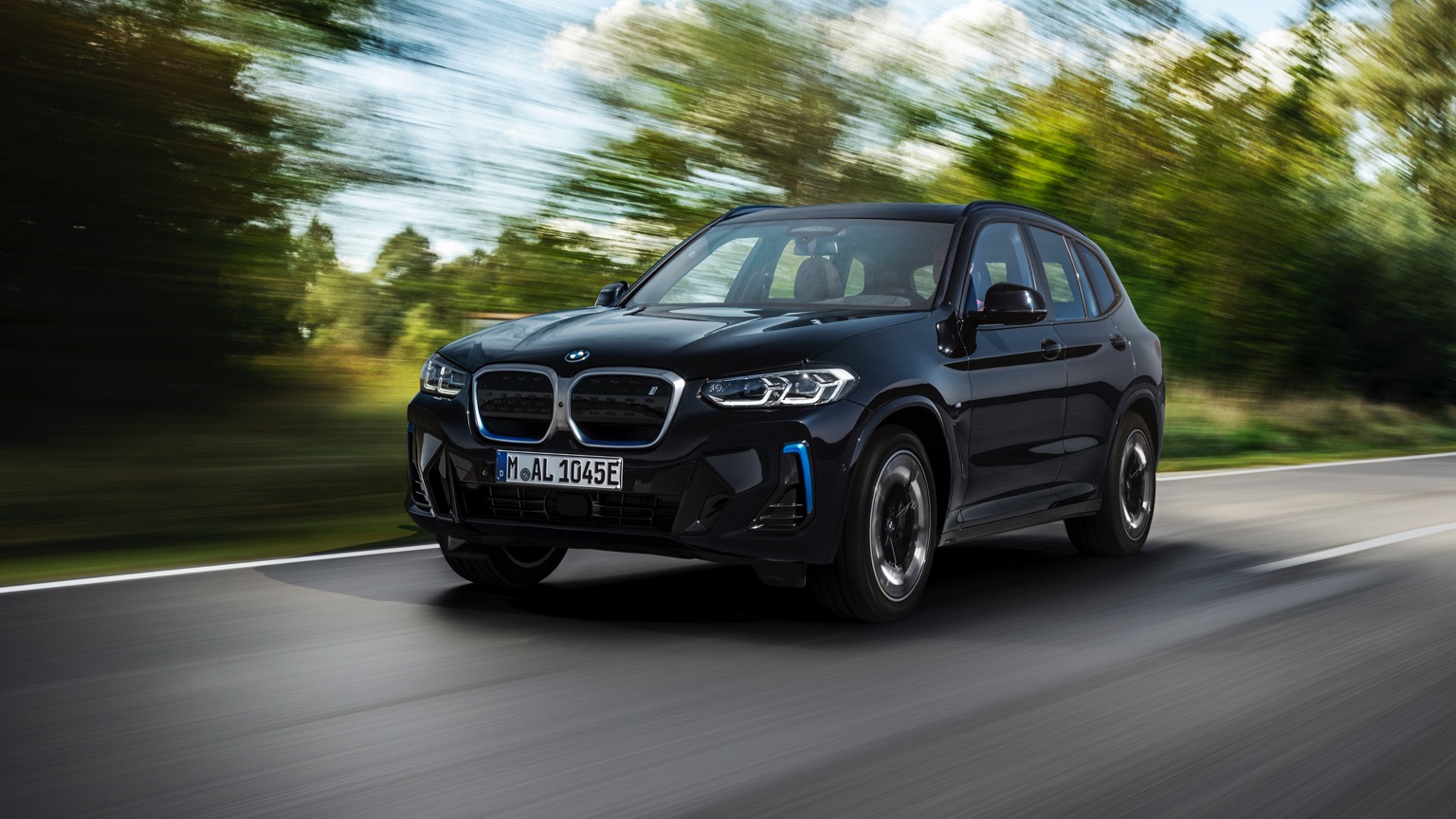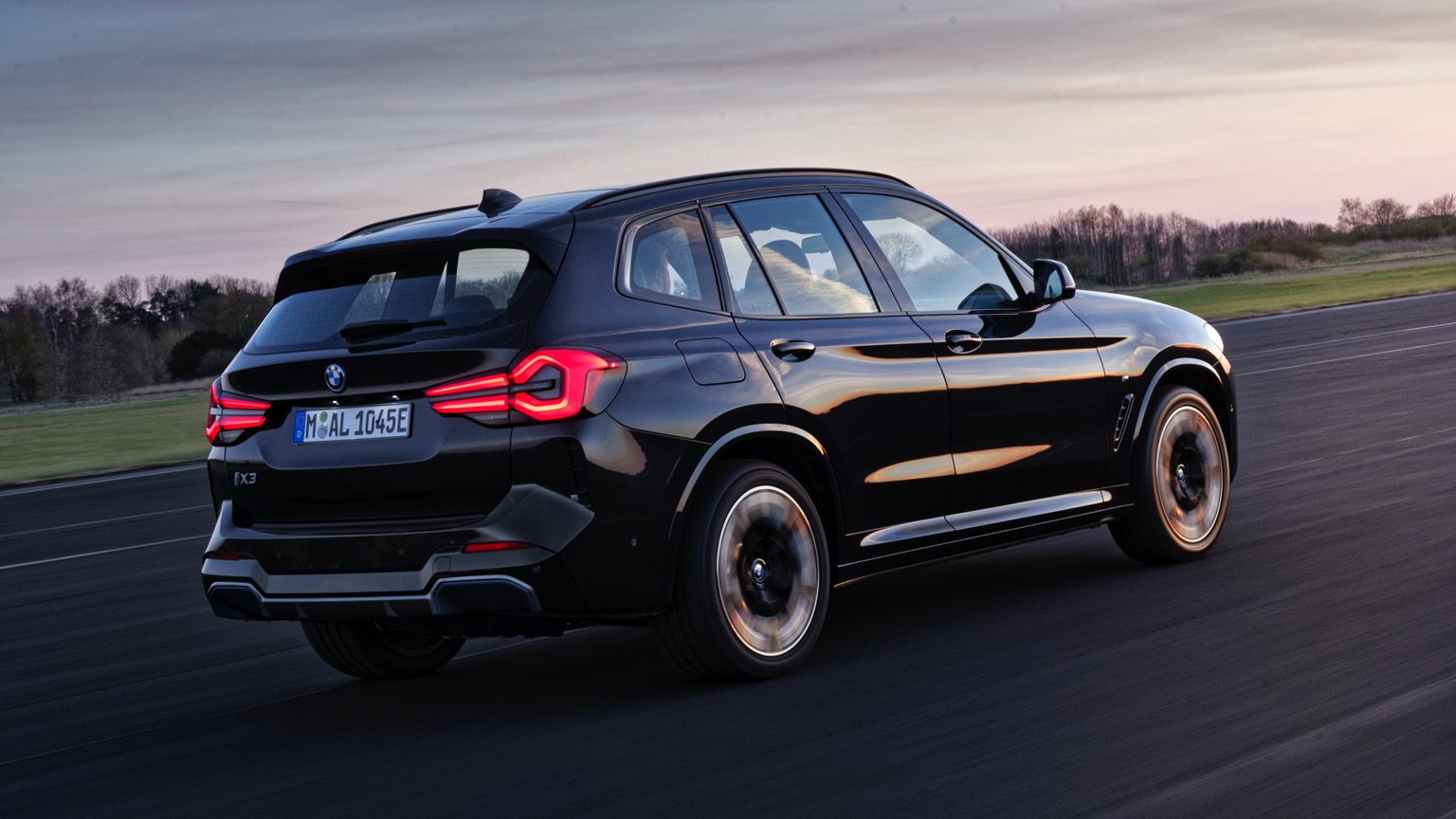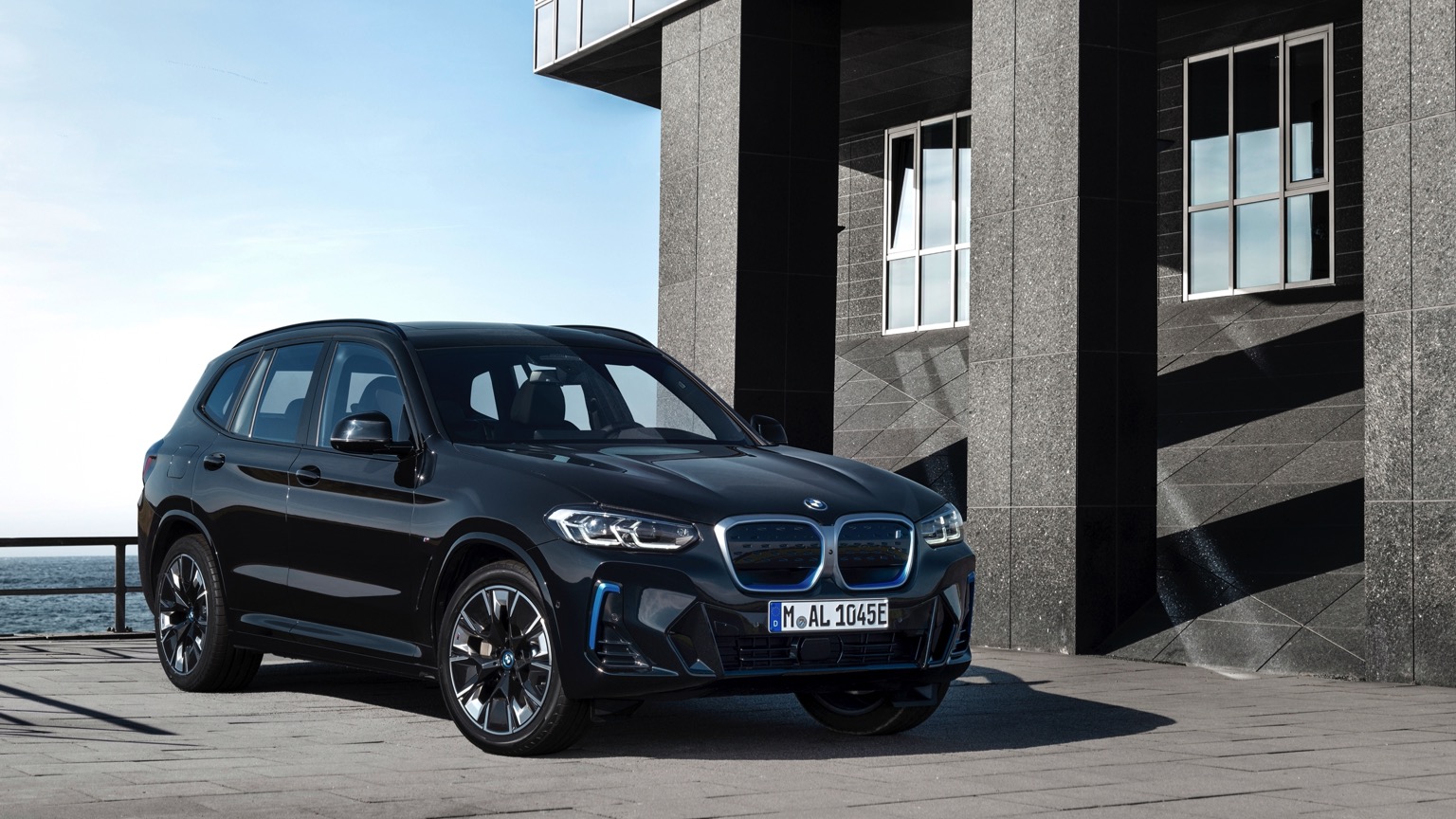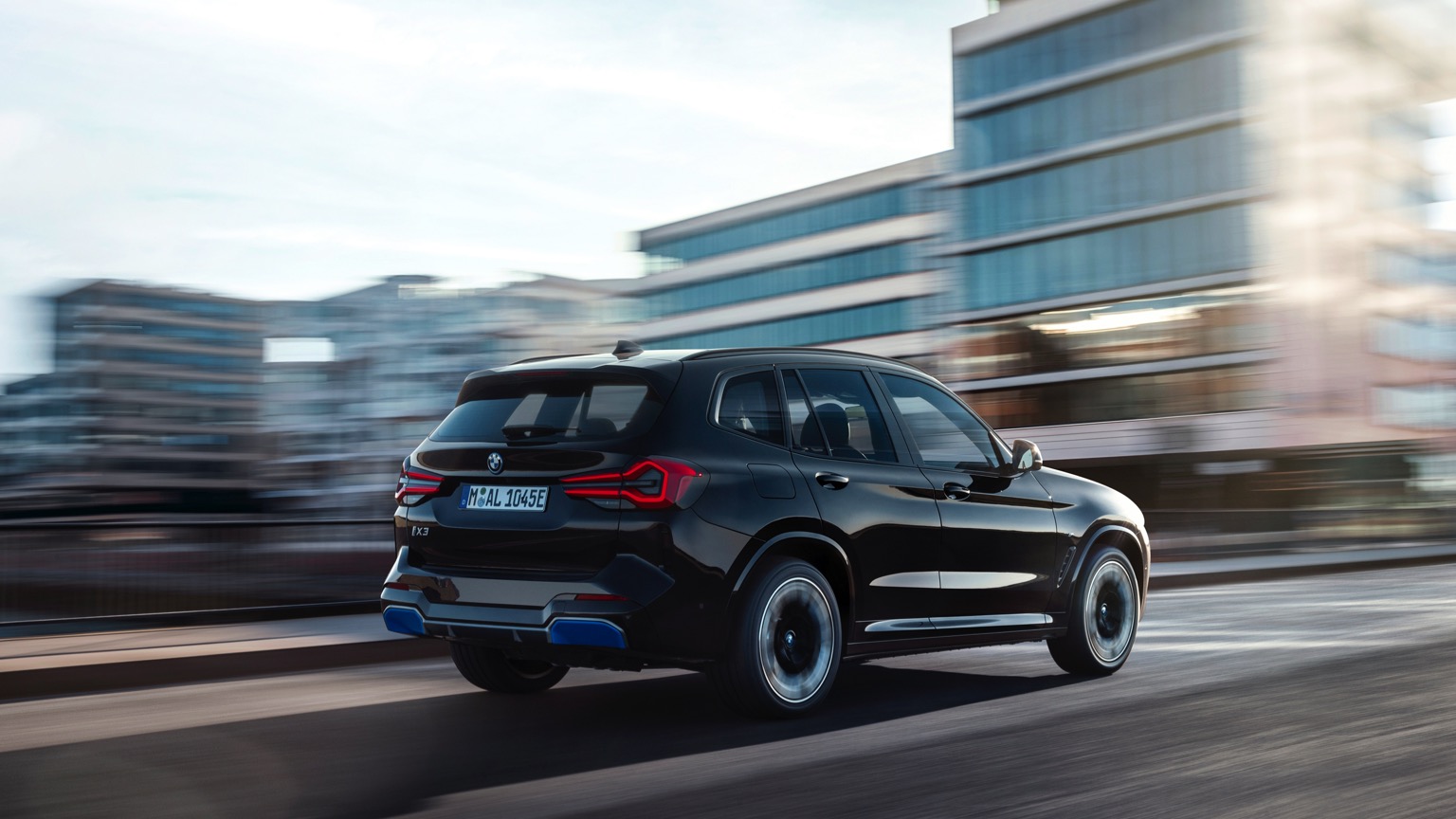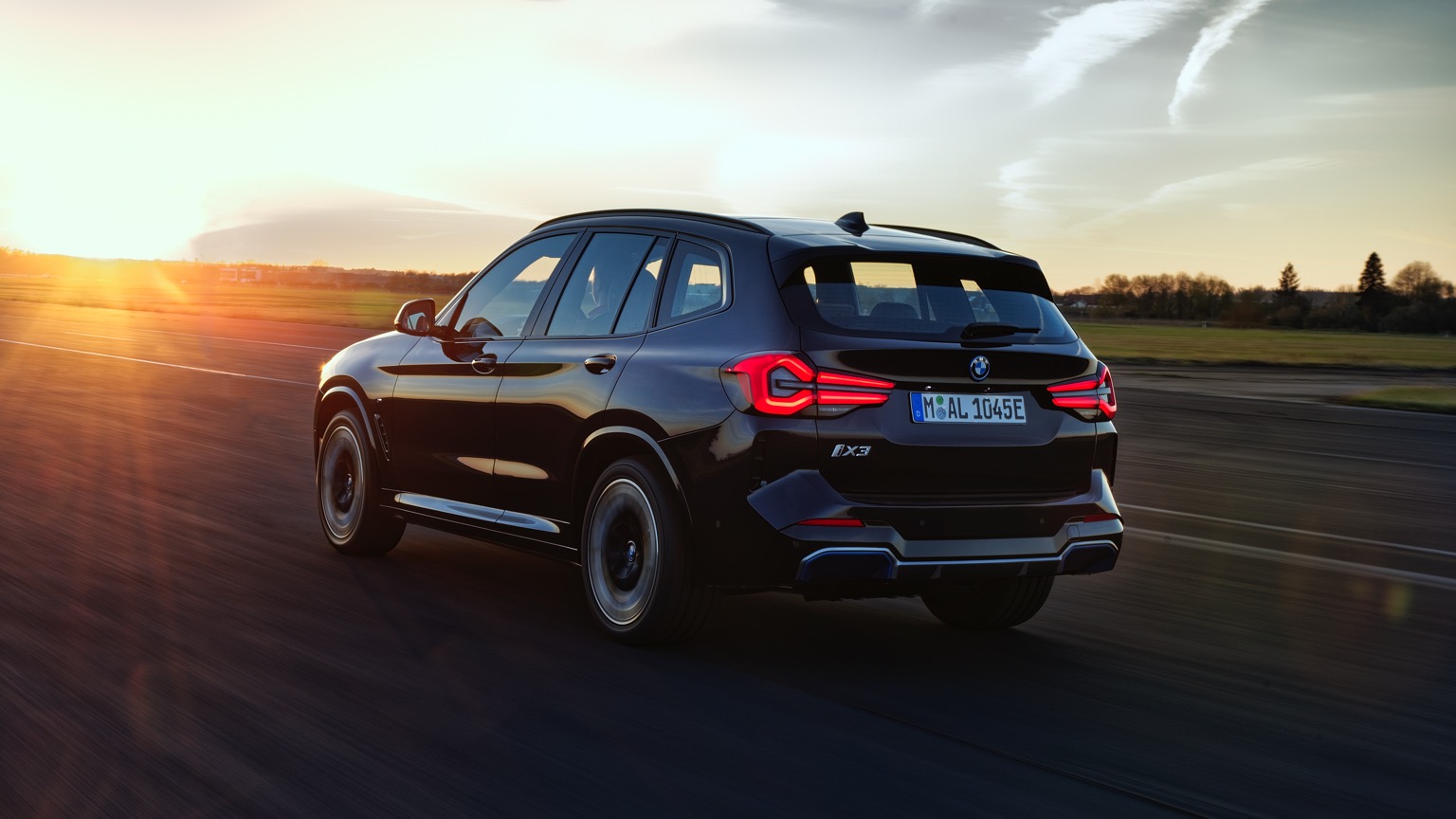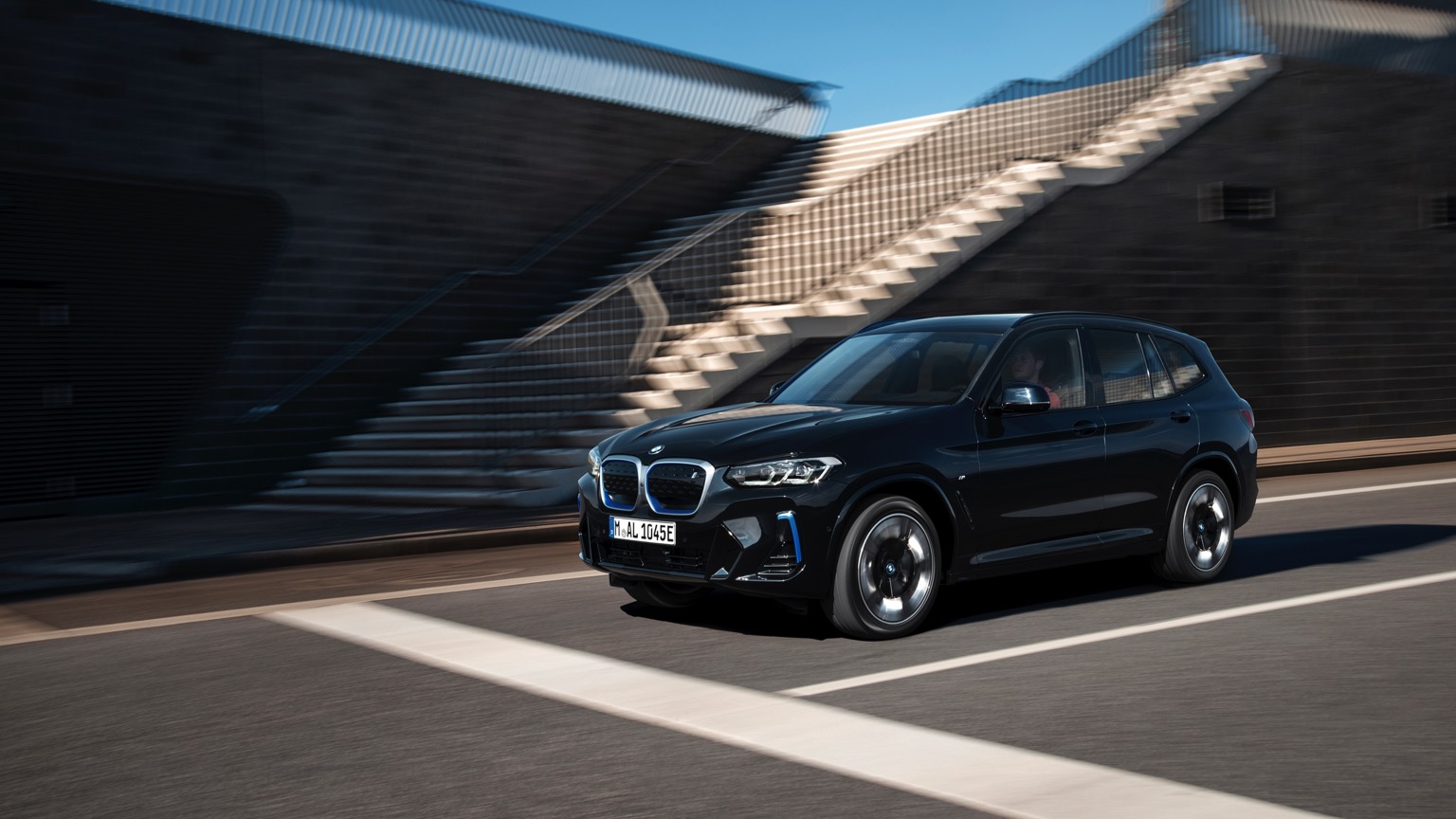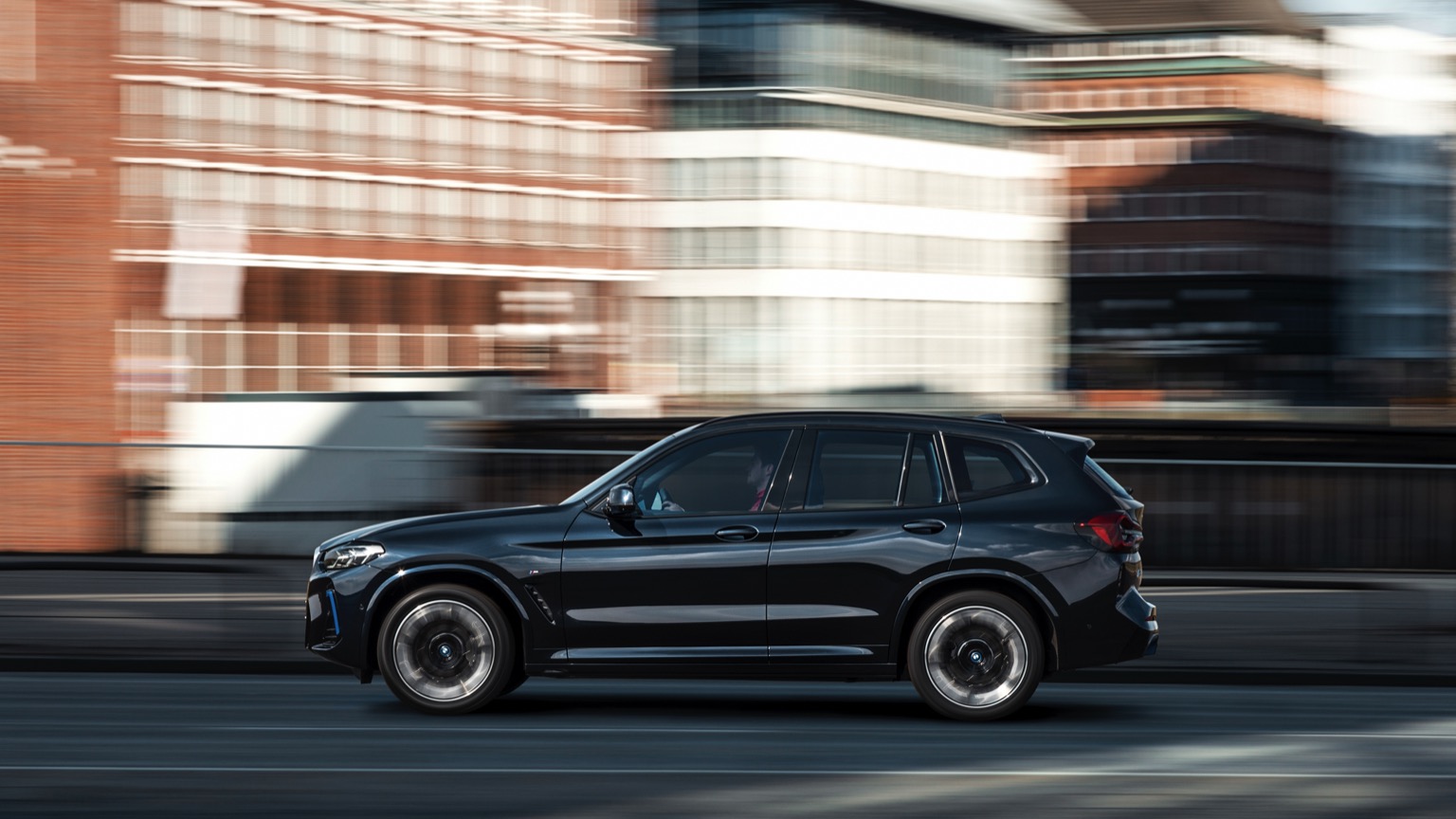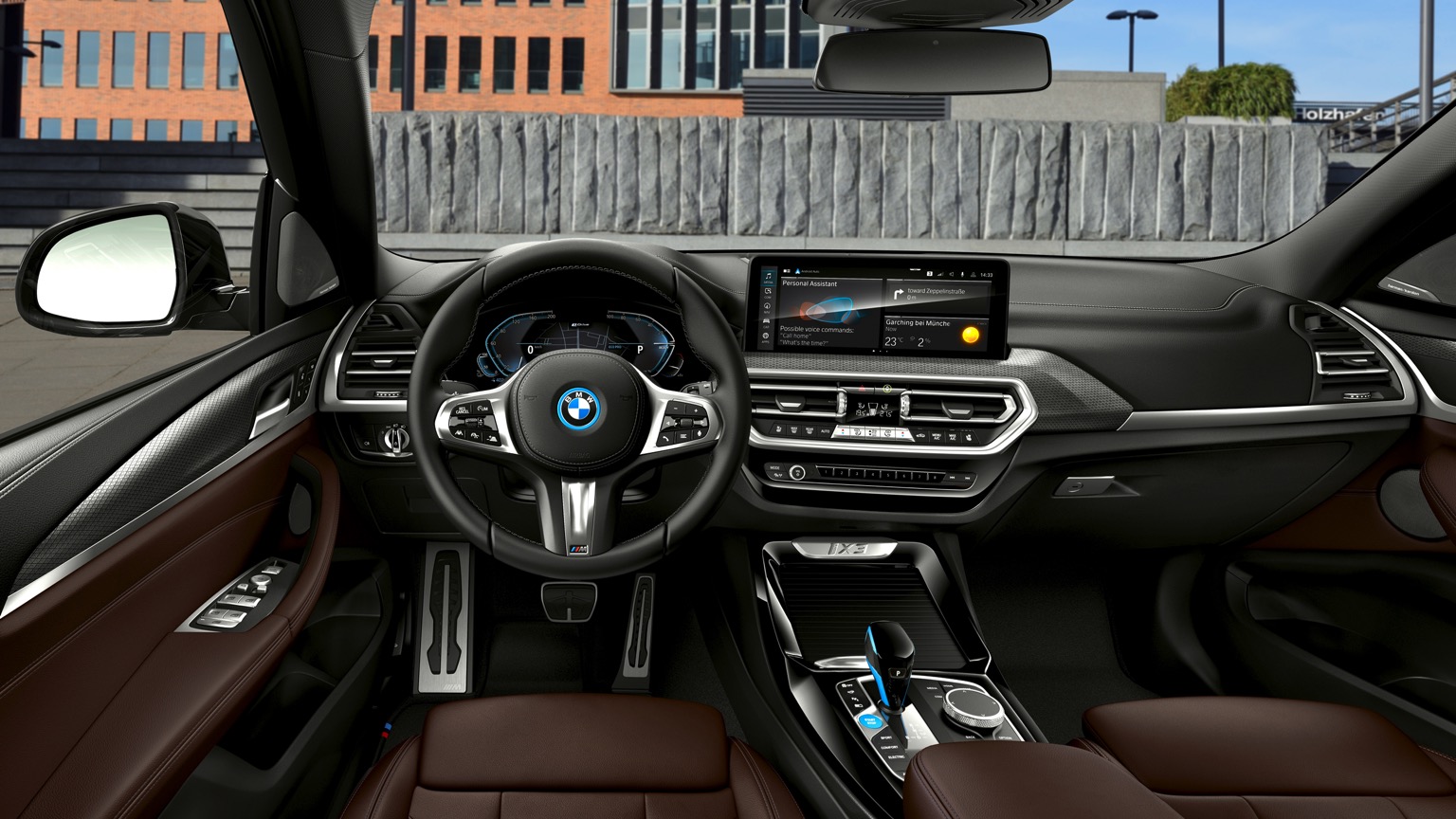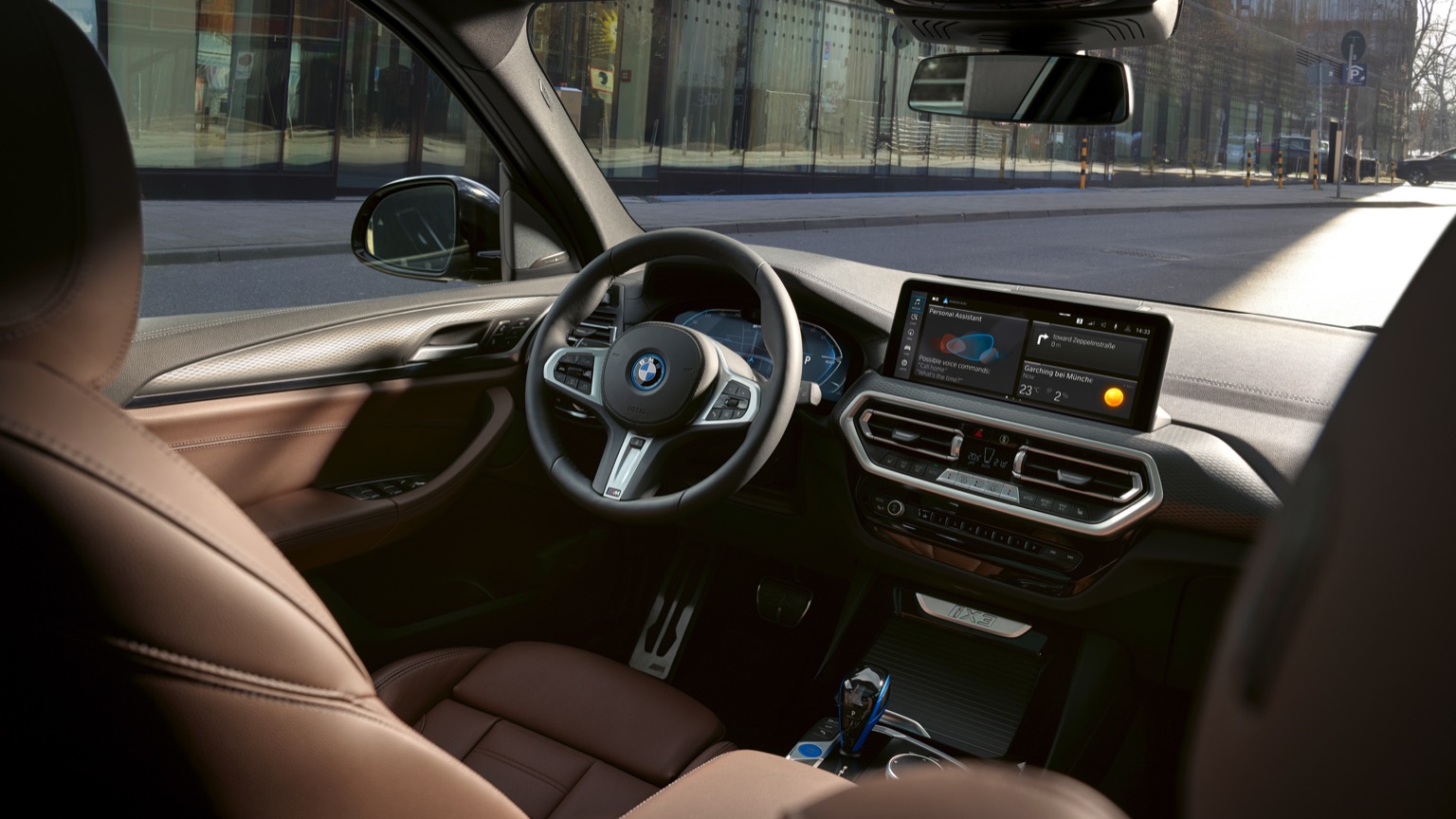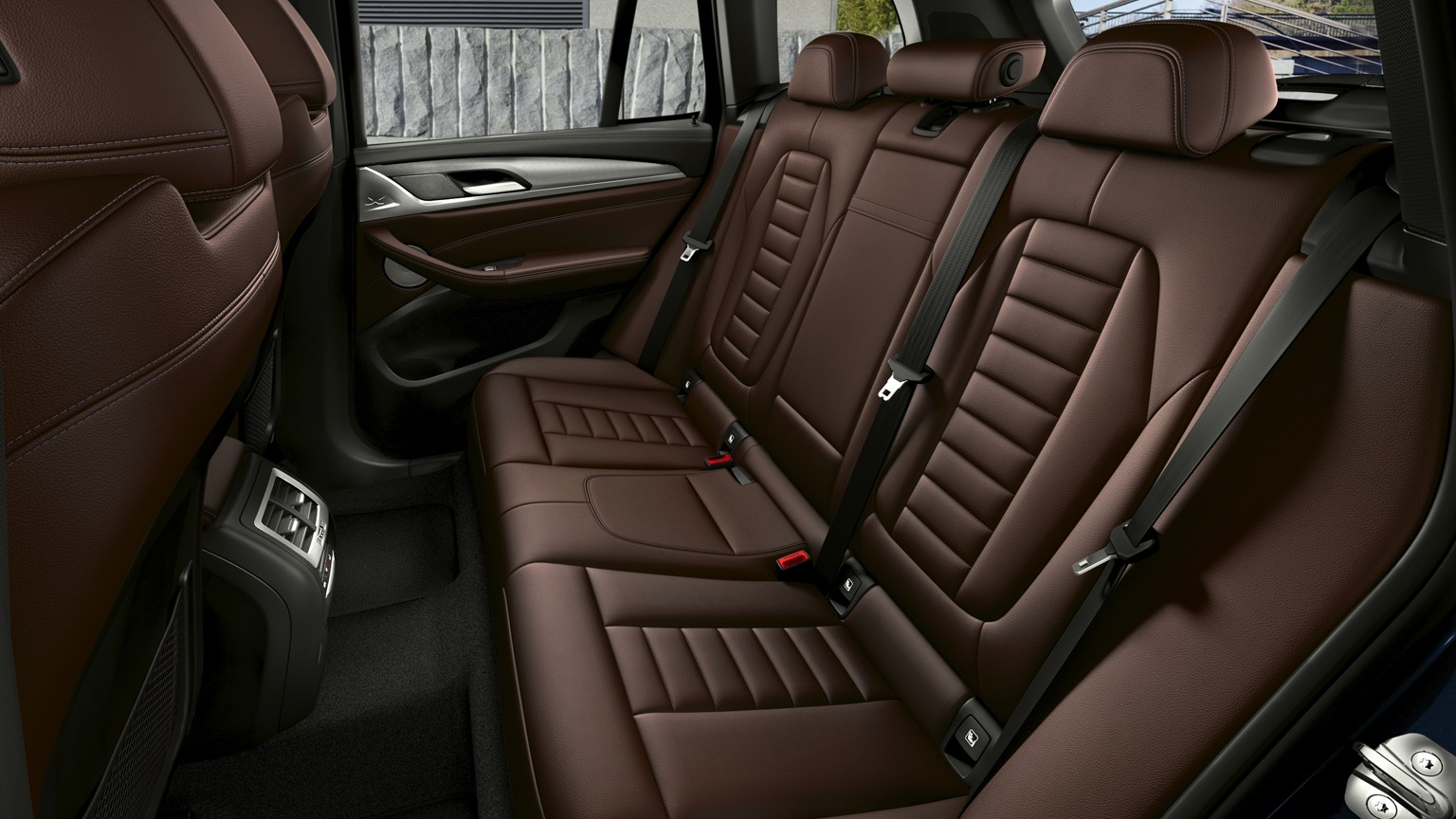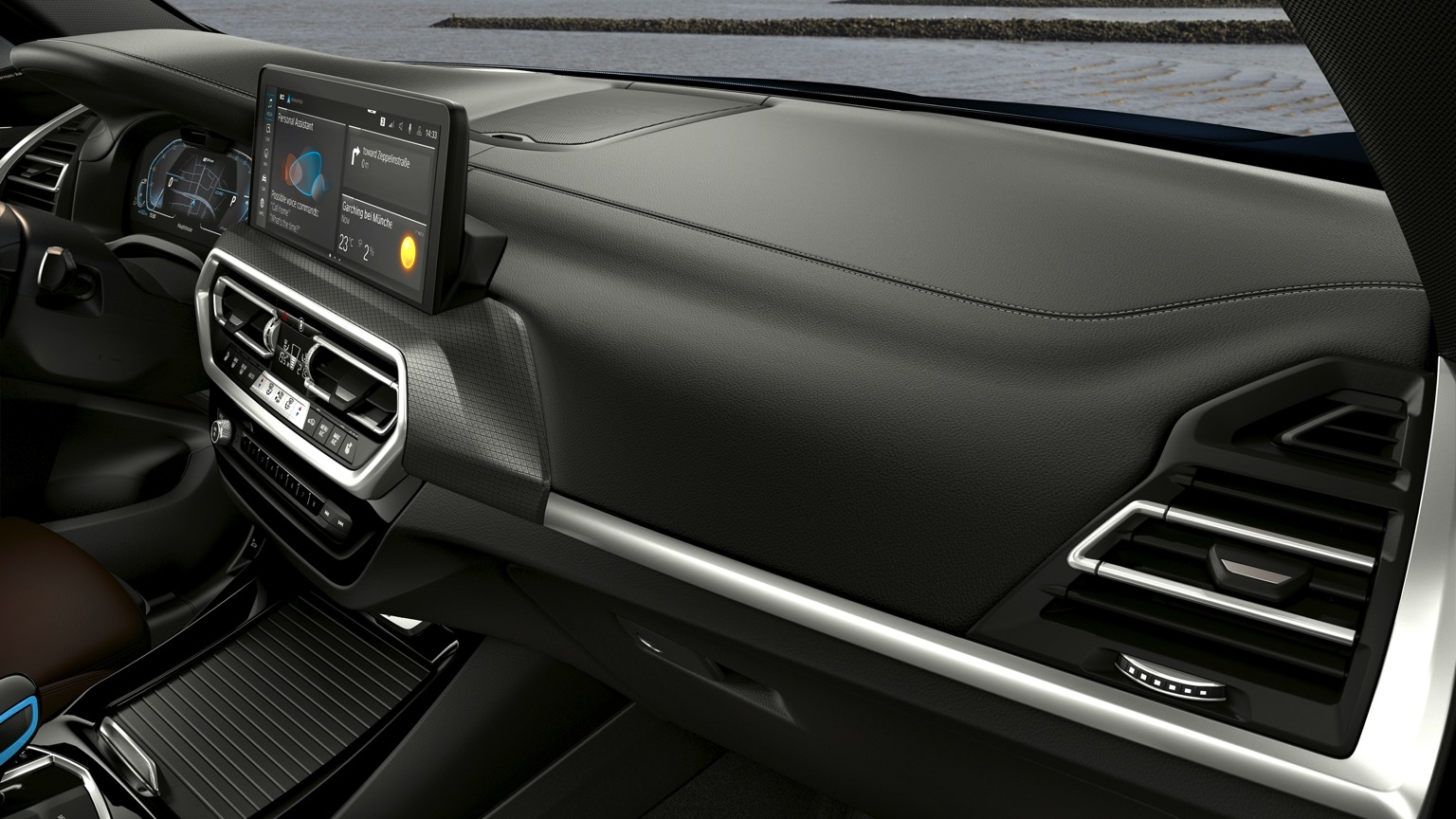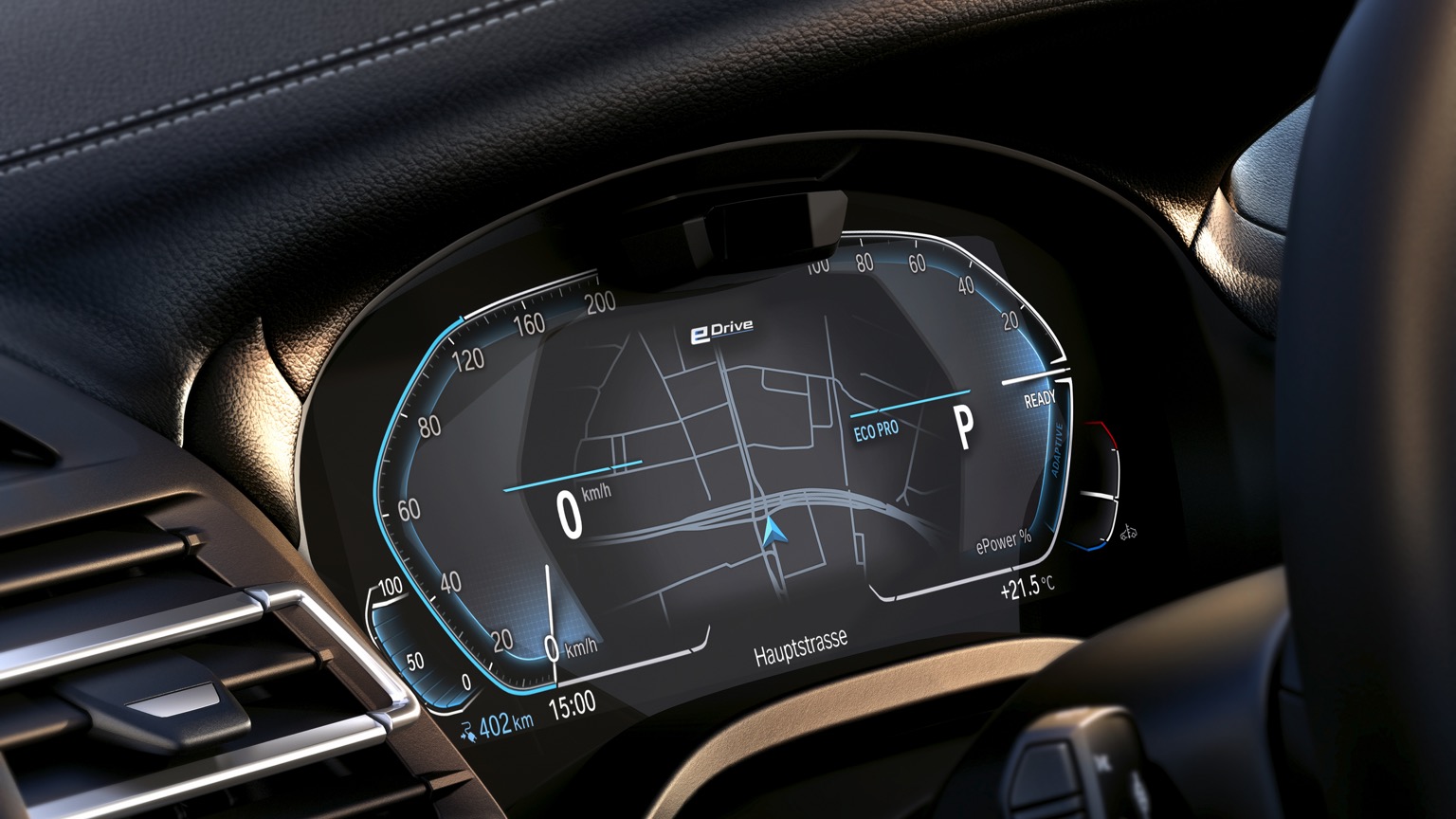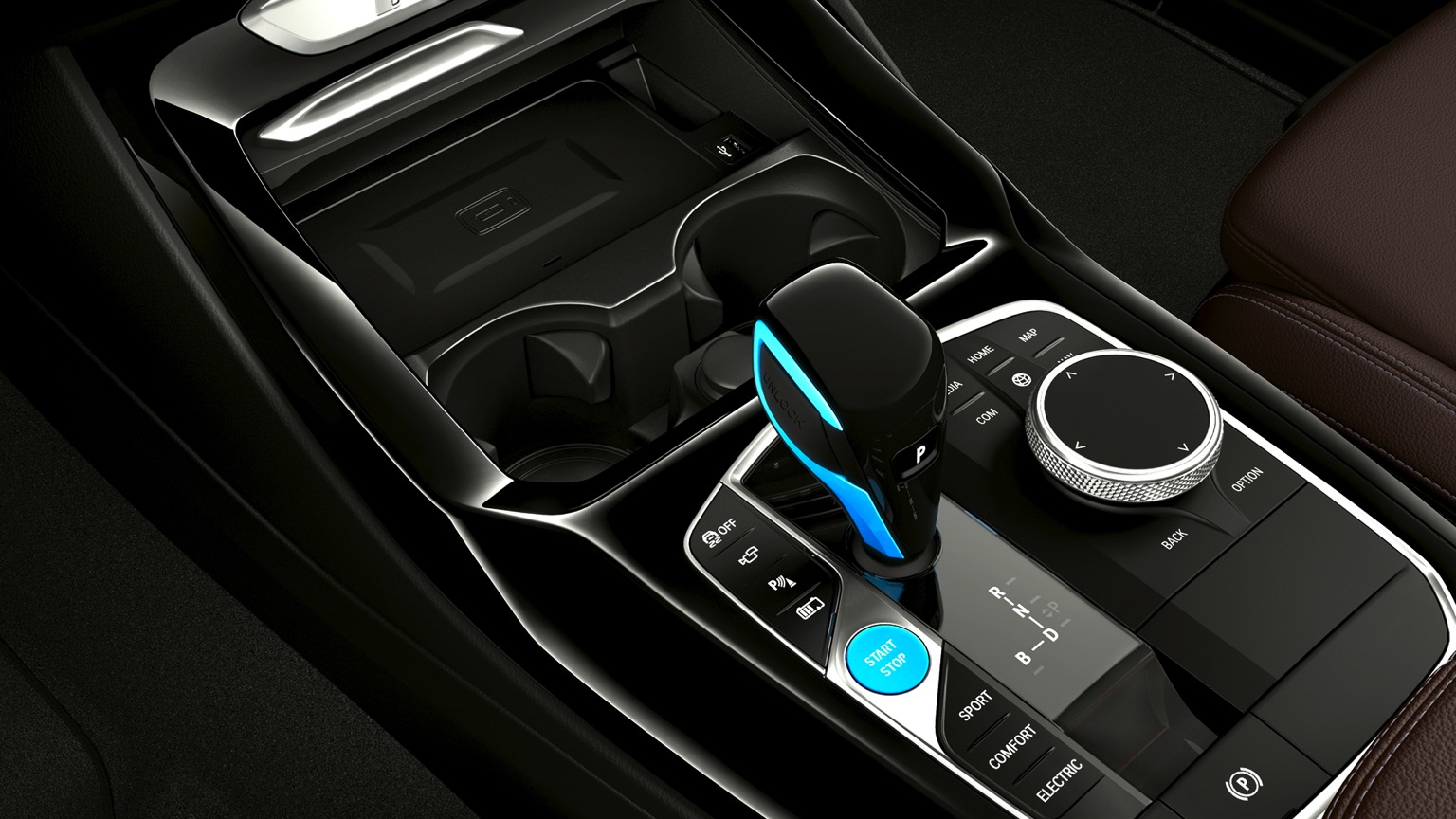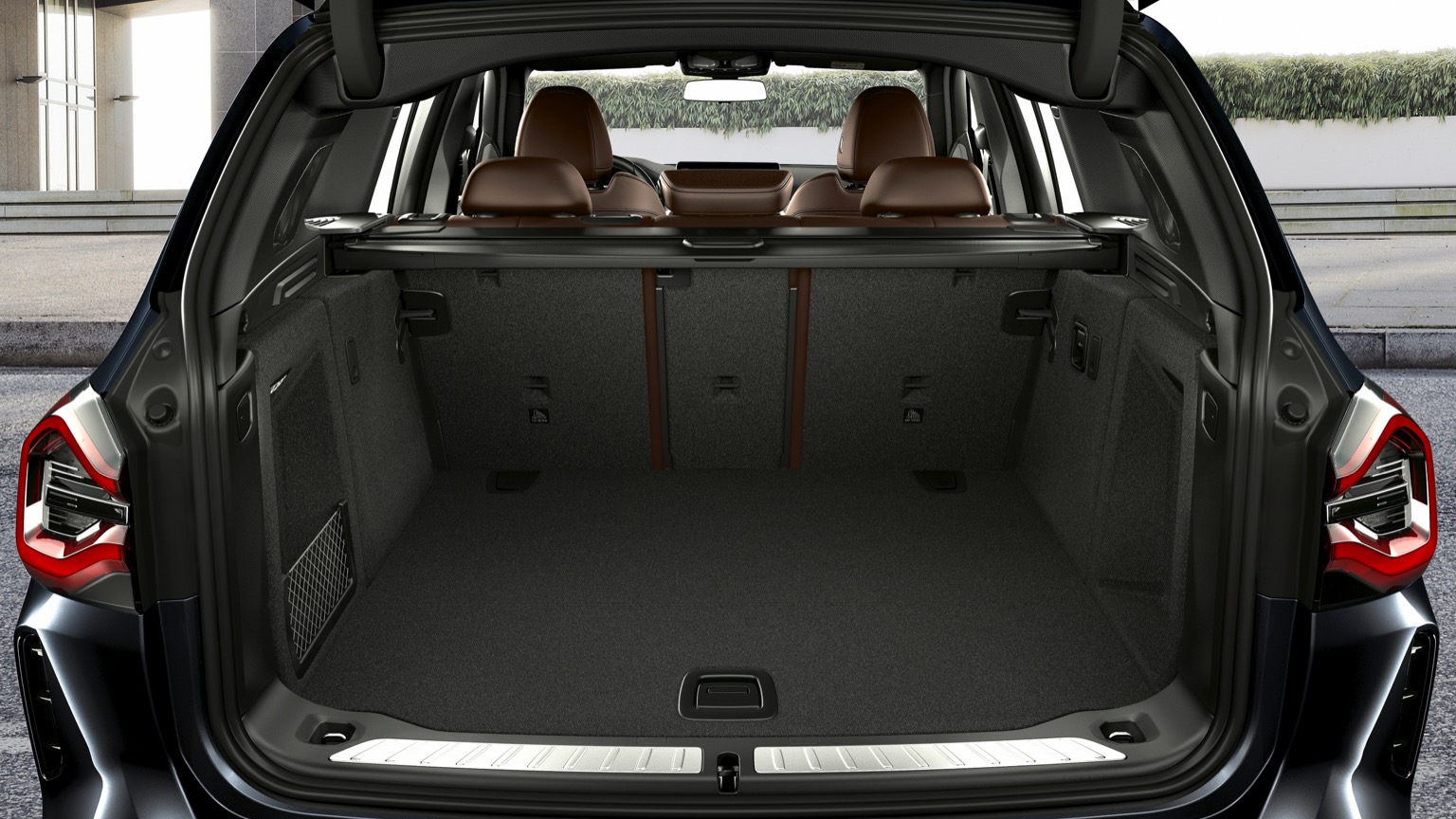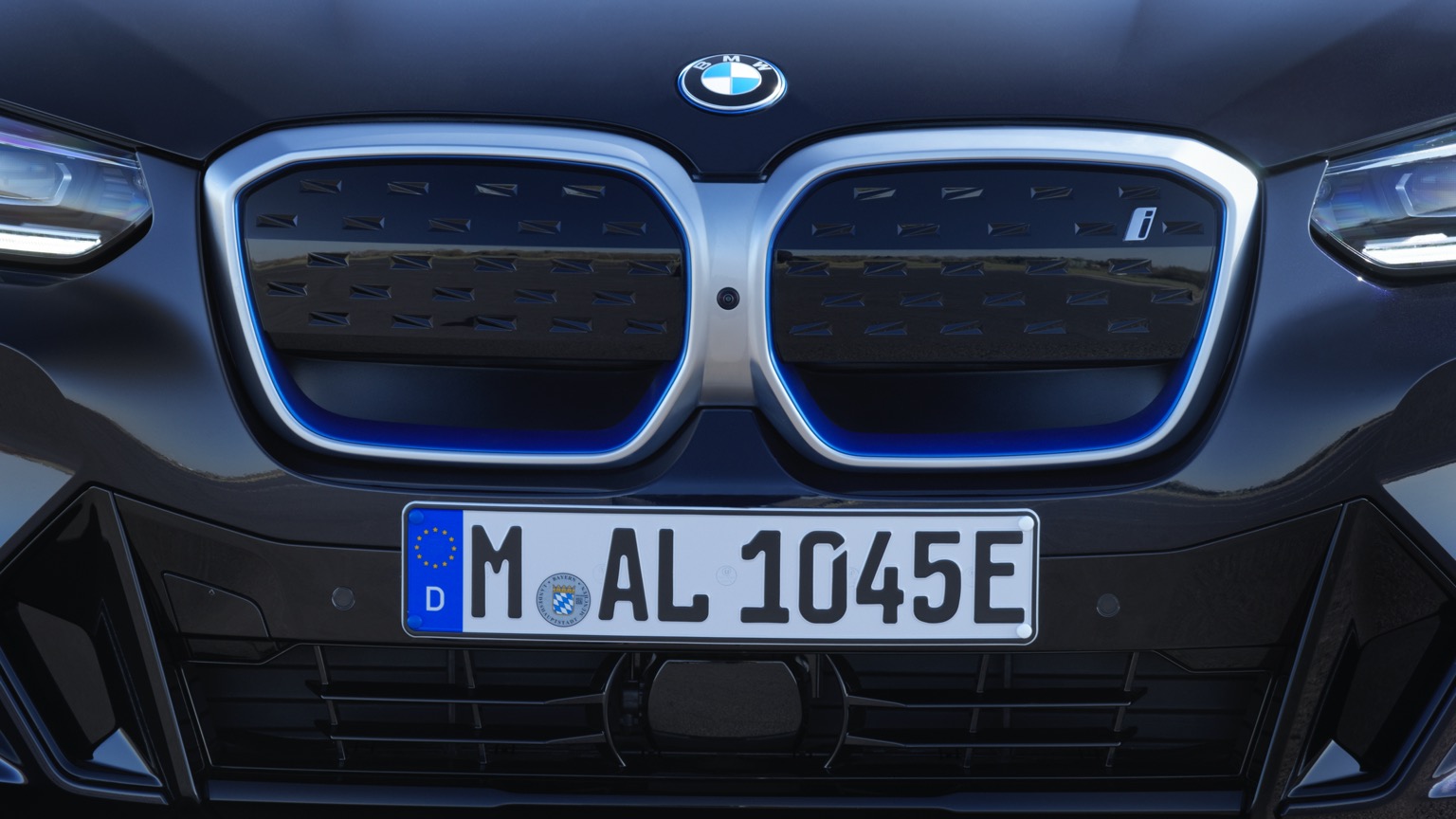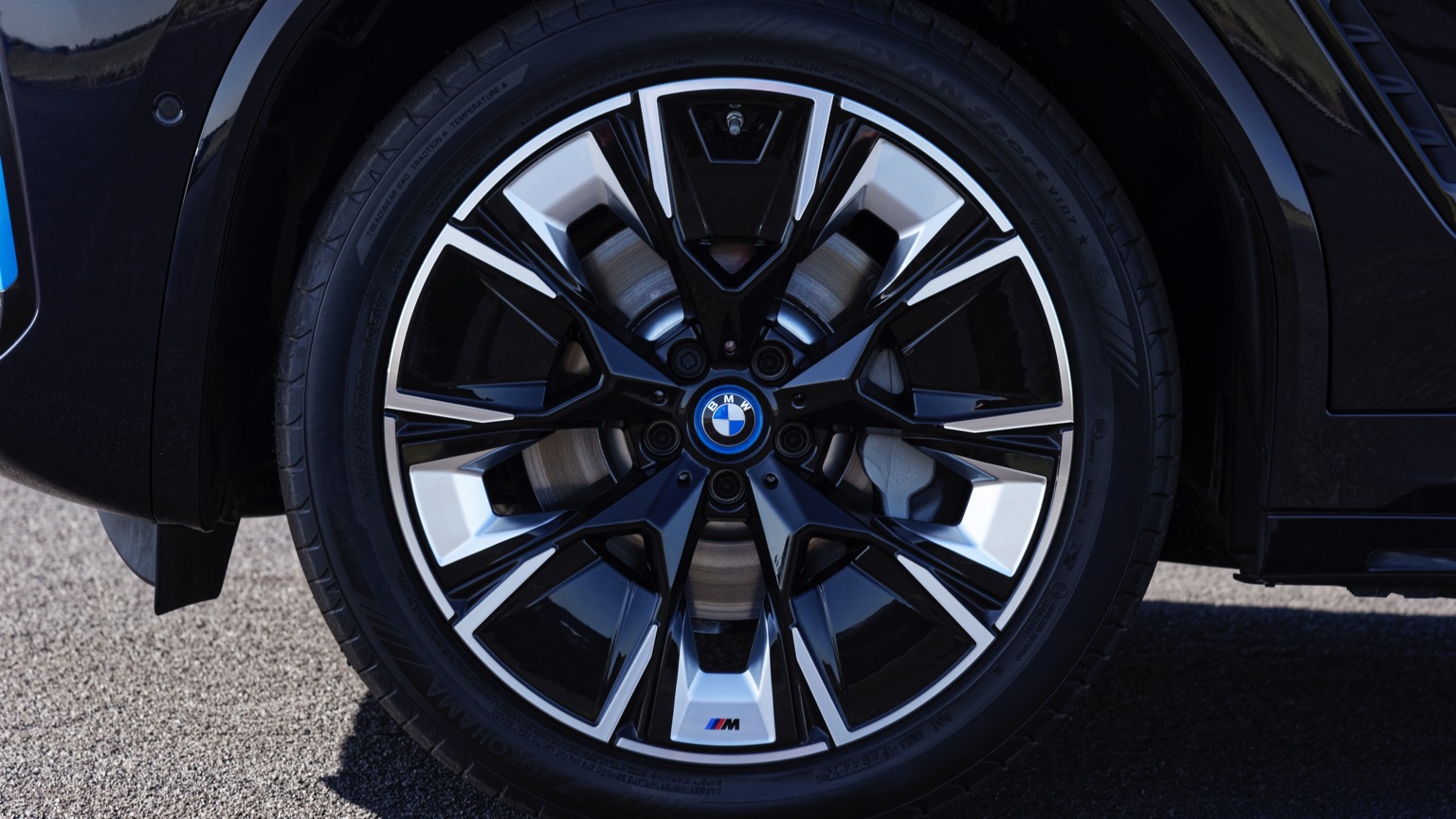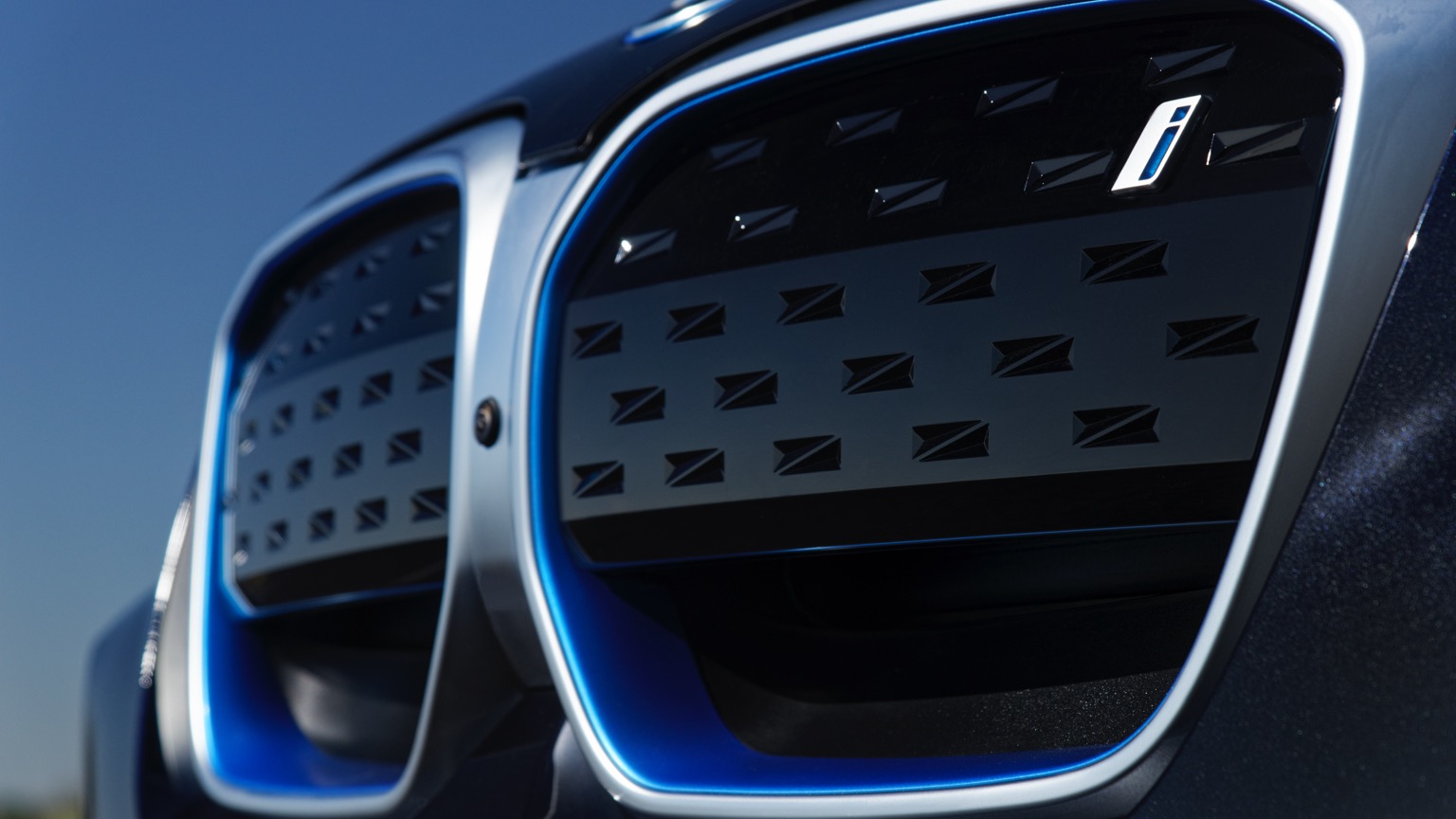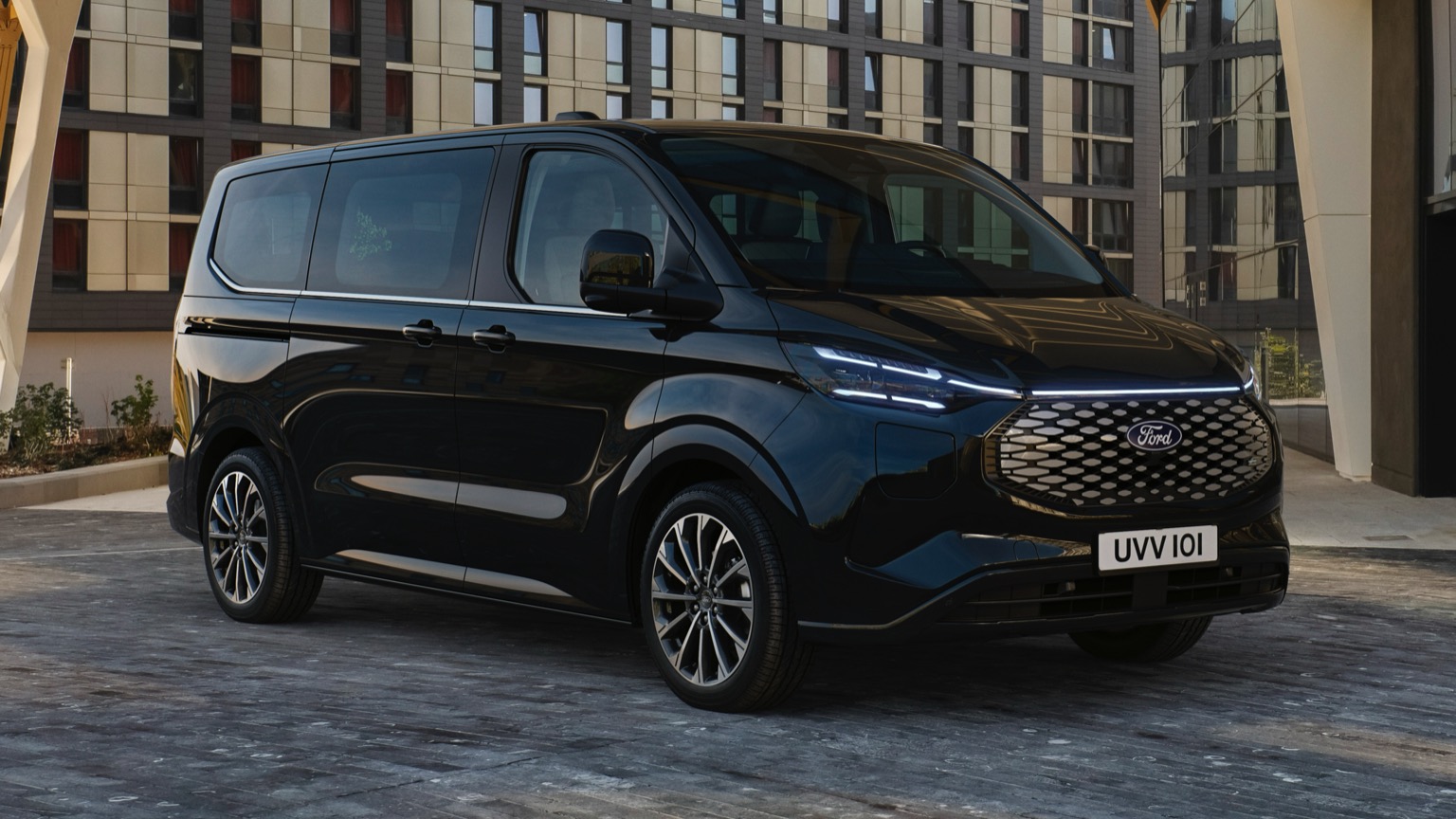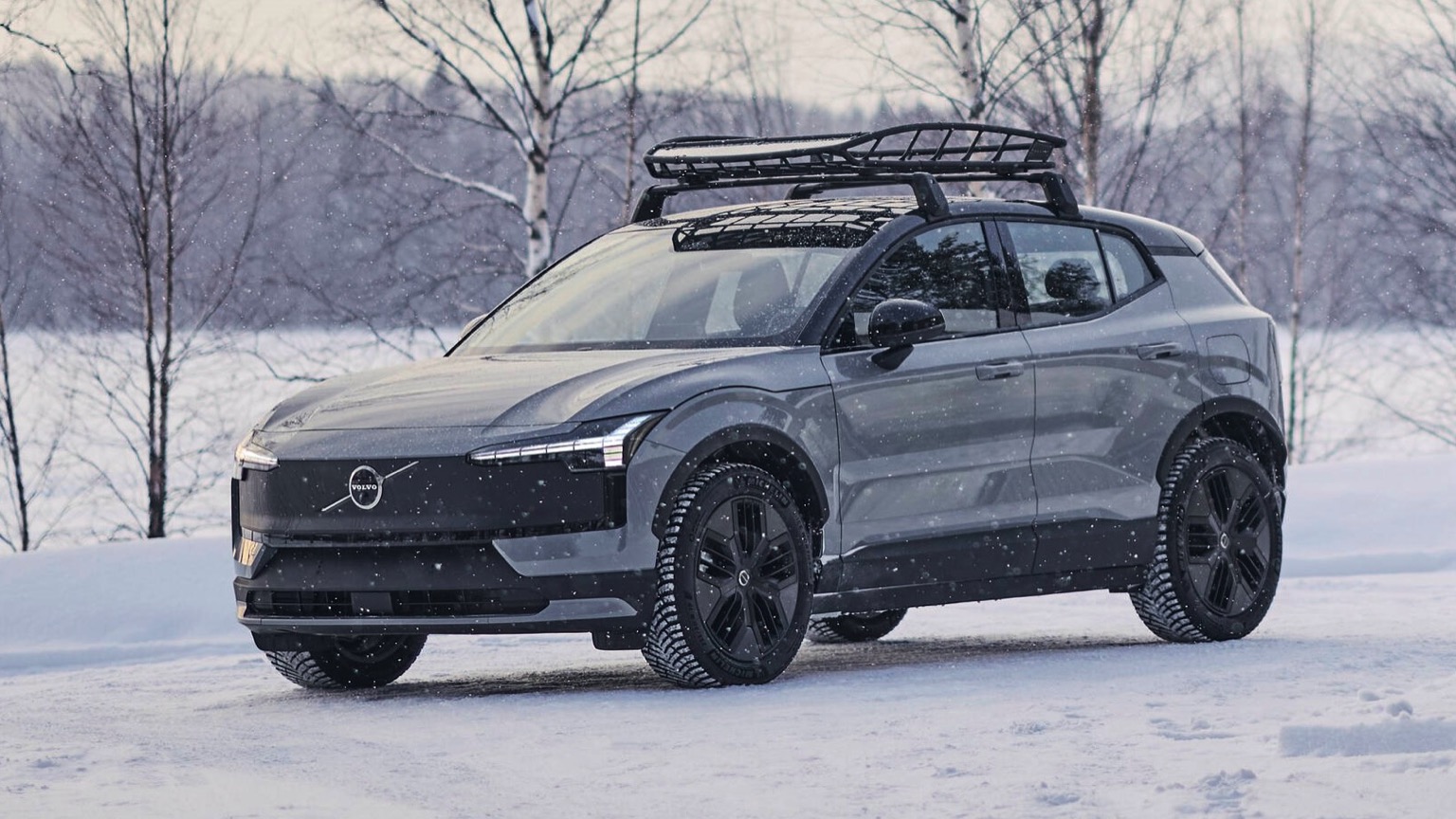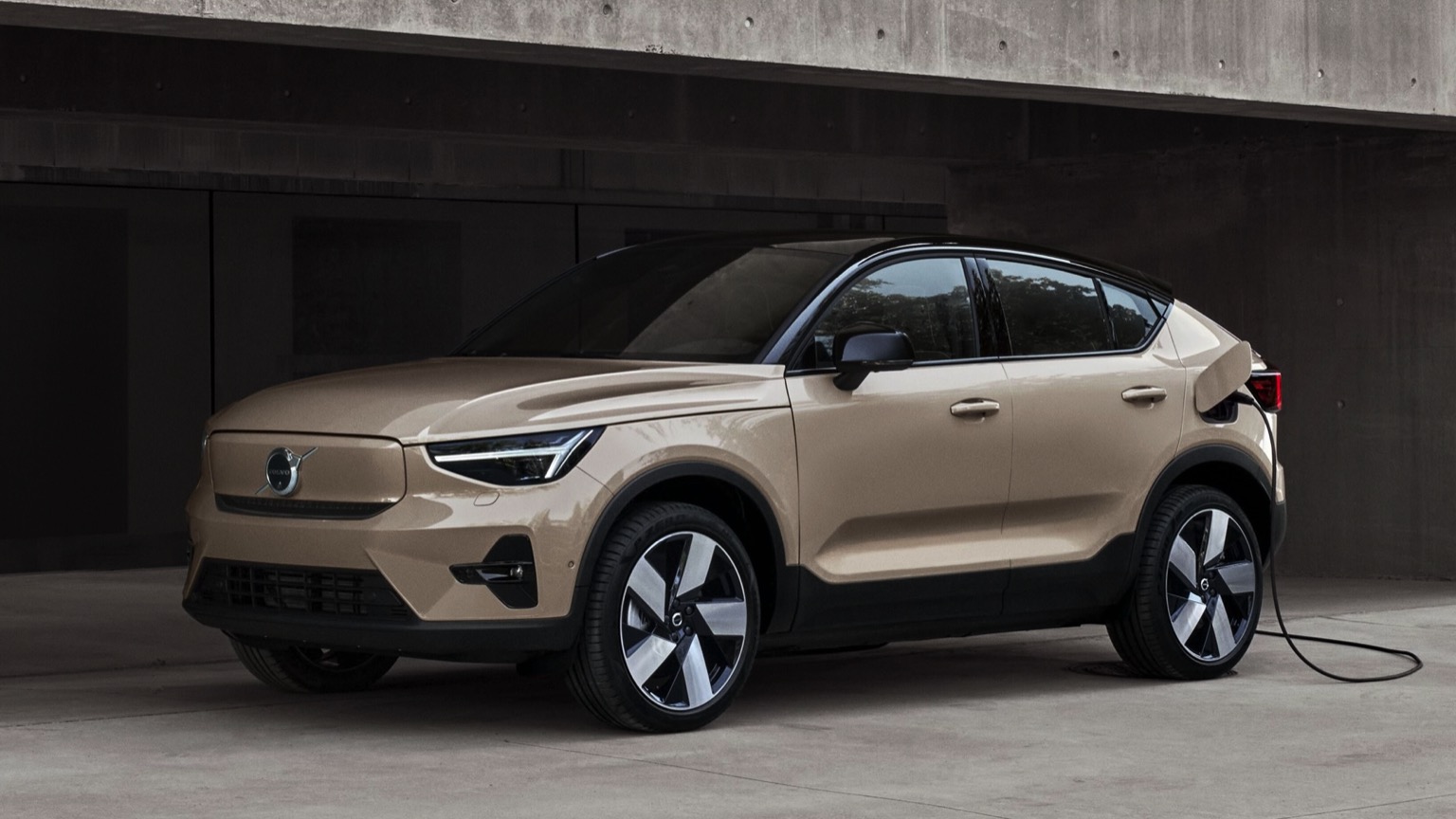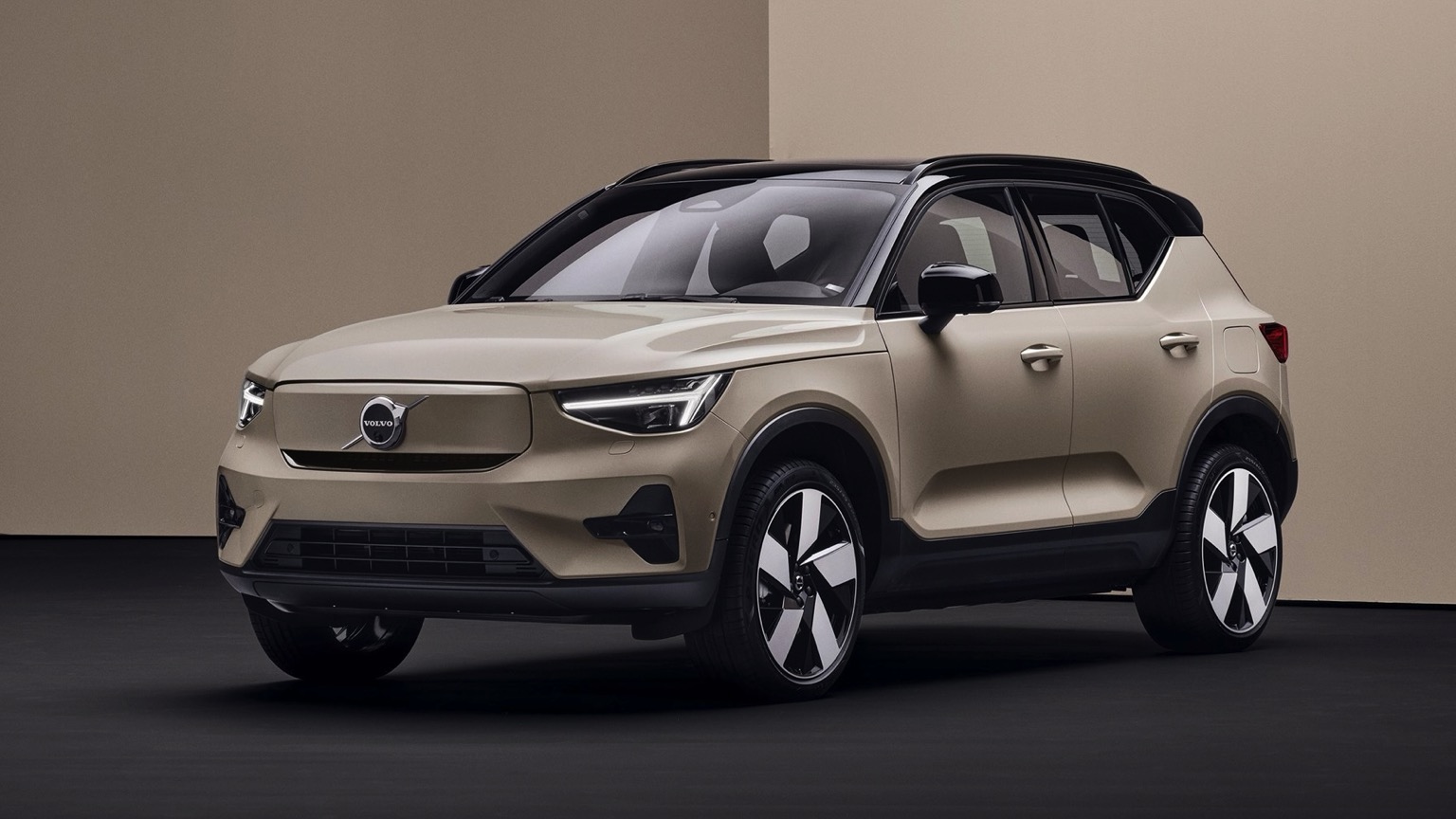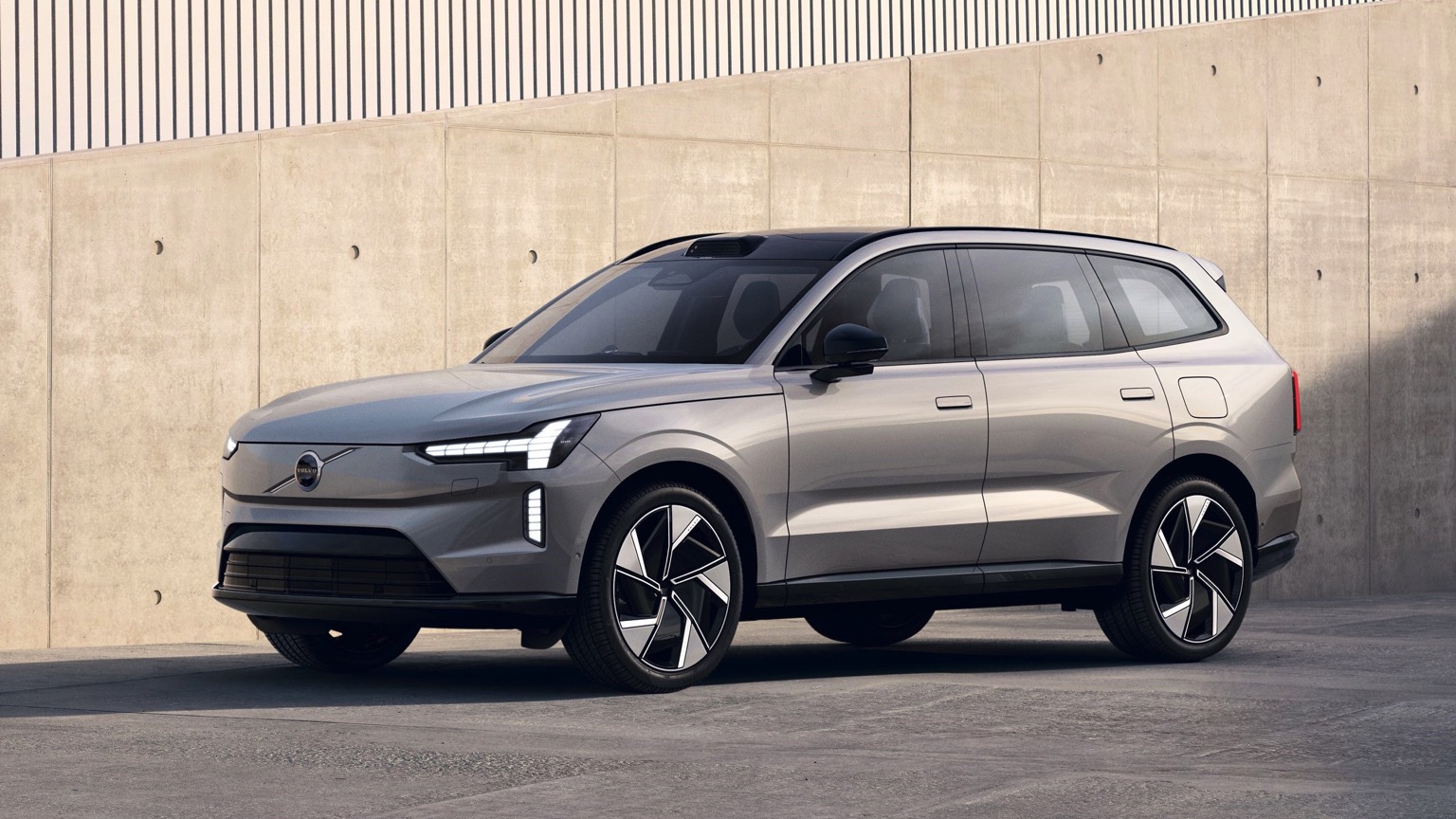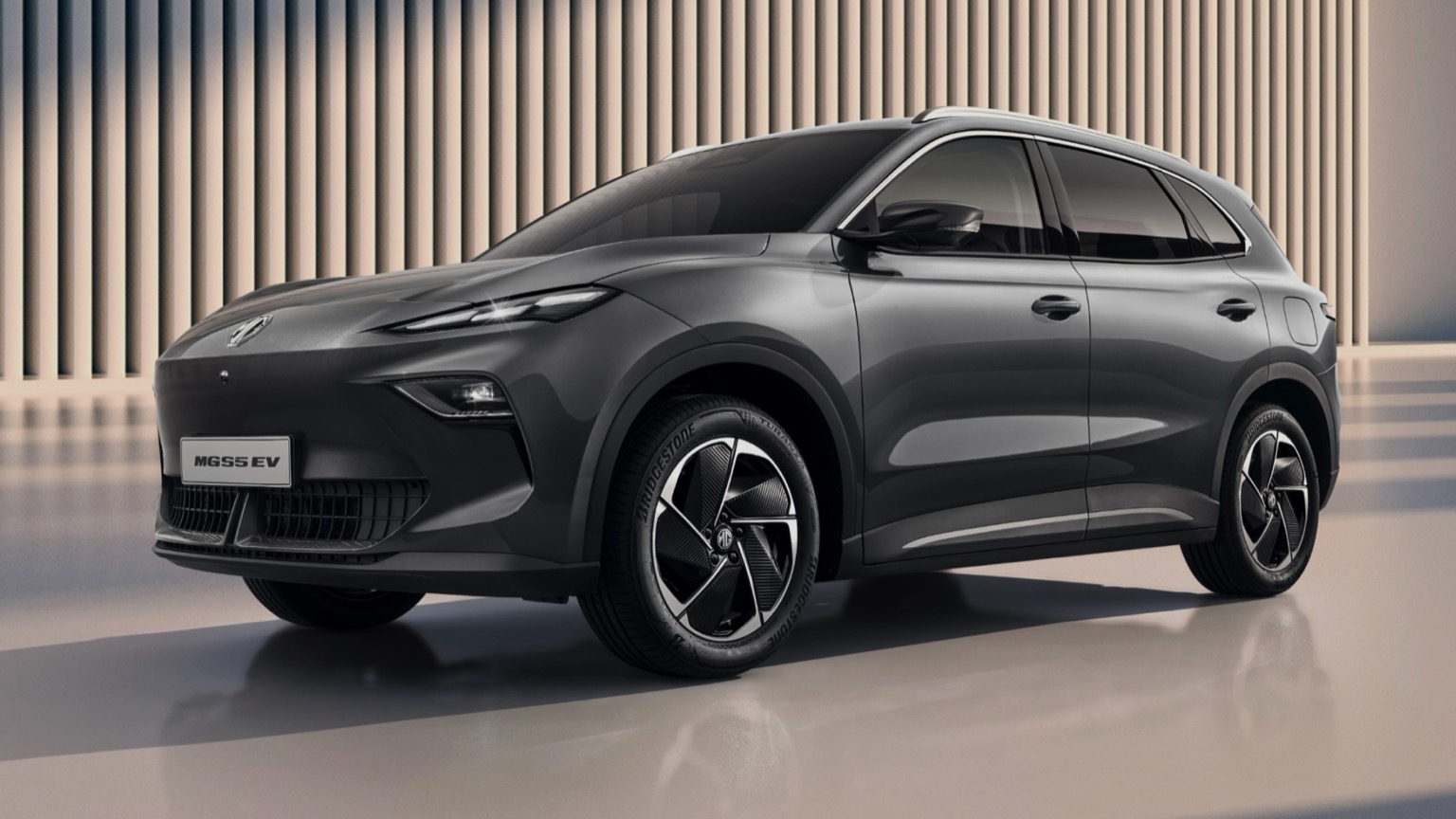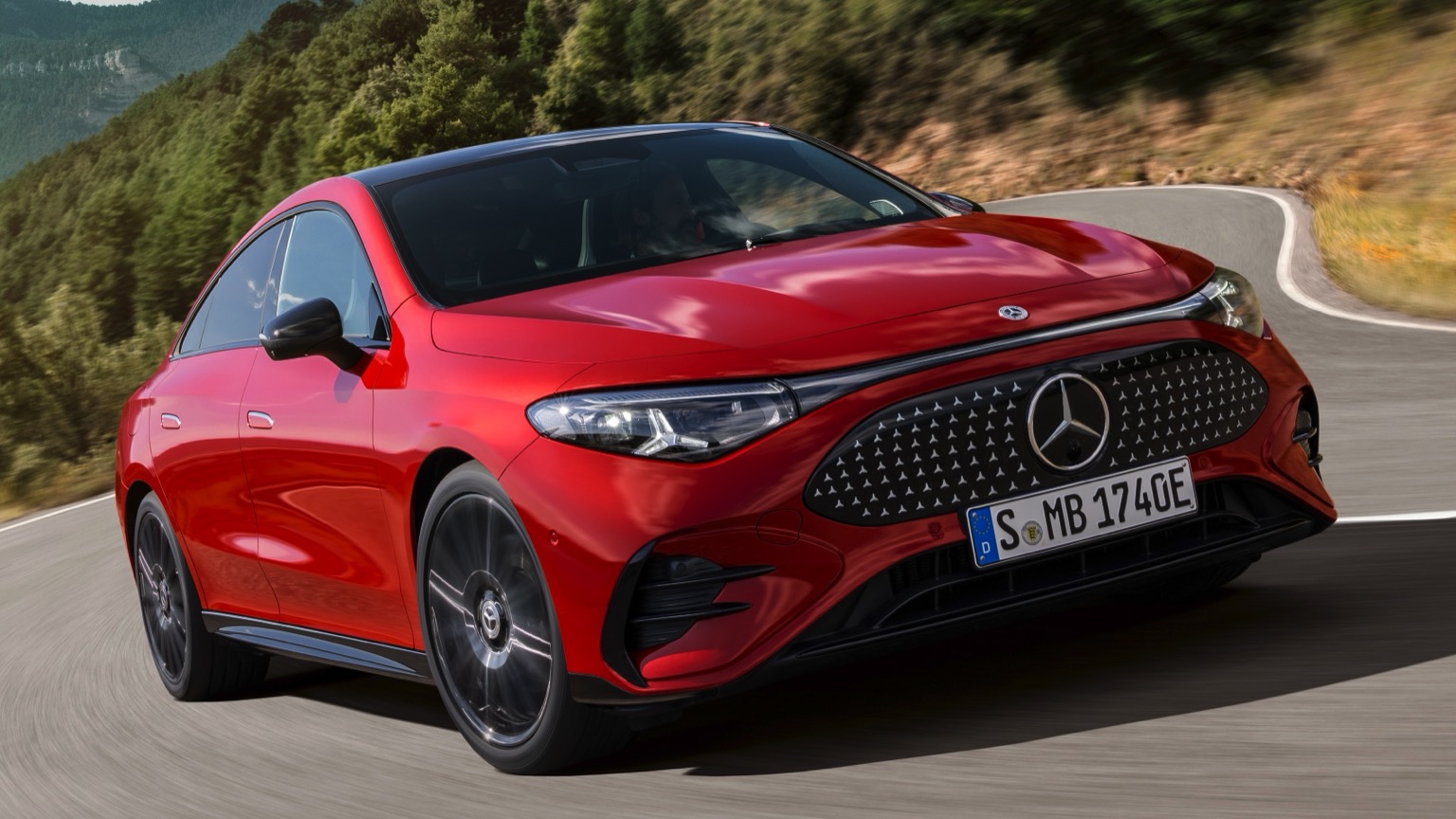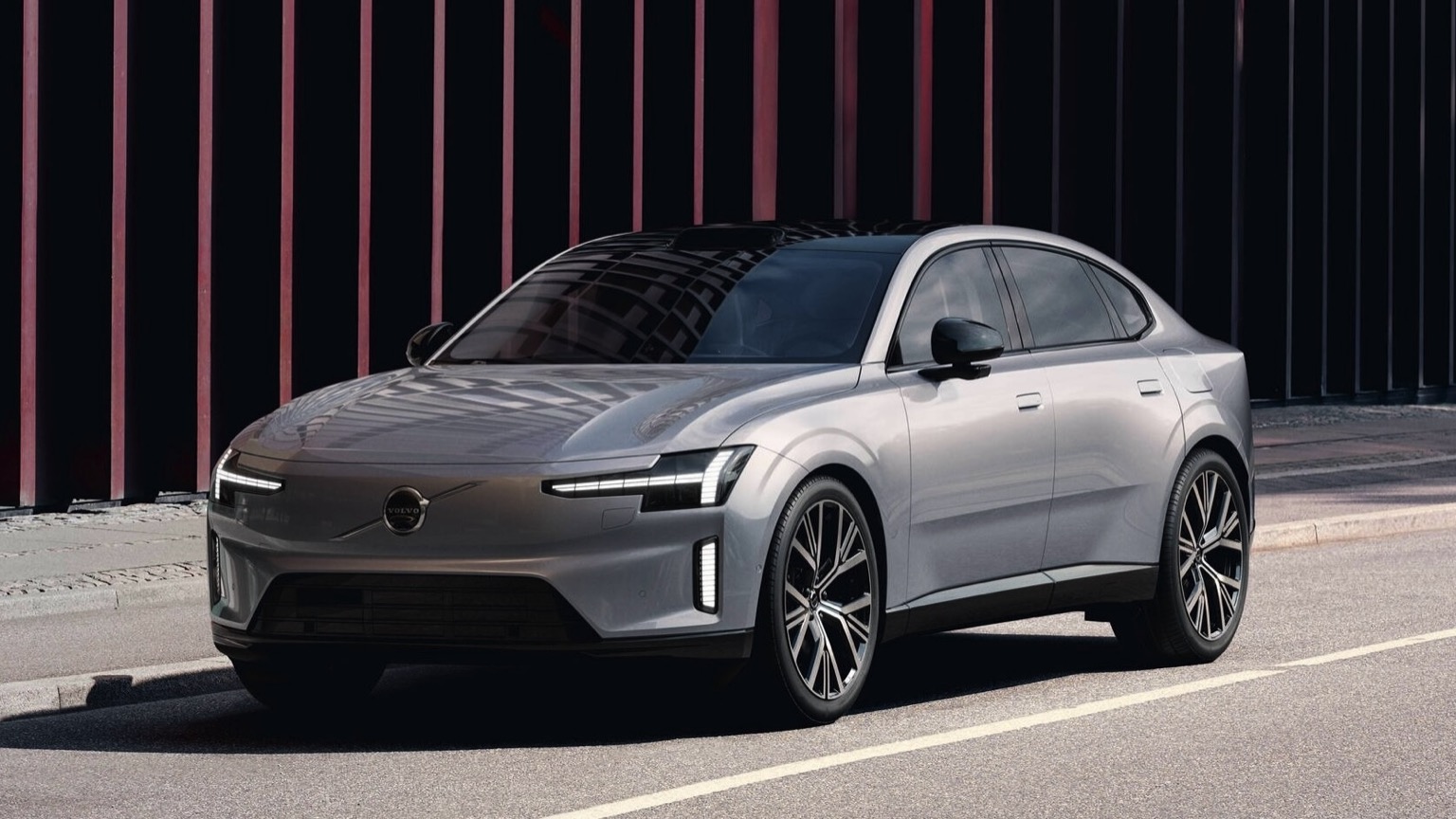Driving Range
In short, how many miles you can travel on a full charge. Is length important? Let’s not open that can of worms…
Efficiency
How many kWh of charge are needed to travel a set distance. The fewer needed, the more efficient your EV is. Easy!
Battery
The bigger the battery, the more power it can hold. In essence, fewer stops needed to top up your charge. Ahh, simplicity!
Top Speed
The maximum speed you can reach with your foot pressed hard to the floor. Important when escaping a zombie apocalypse, we assume.
Seats
Well, you don’t want to have to leave anybody at home… or do you?
Body
From stylish SUVs and compact crossovers, to curvaceous coupes and handy hatchbacks, there’s a perfect shape for everyone!
Isofix
The safe way to attach a child seat. Typically, these are hidden in the join between the back seats, alongside the crumbs from your last meal deal.
Safety Rating
A measure that considers the amount of safety kit installed, how a vehicle performs in crash testing and how safe it is for both pedestrians and cyclists.
| City - Cold Weather | 235 miles |
| Highway - Cold Weather | 170 miles |
| Combined - Cold Weather | 200 miles |
| City - Mild Weather | 350 miles |
| Highway - Mild Weather | 215 miles |
| Combined - Mild Weather | 270 miles |
Indication of real-world range in several situations. Cold weather: 'worst-case' based on -10°C and use of heating. Mild weather: 'best-case' based on 23°C and no use of A/C. For 'Highway' figures a constant speed of 110 km/h is assumed. The actual range will depend on speed, style of driving, weather and route conditions.
| Charge Port | Type 2 |
| Port Location | Right Side - Rear |
| Charge Power | 11 KW AC |
| Charge Time | 8hr |
| Charge Speed | 30 mph |
| Fastcharge Port | CCS |
| FC Port Location | Right Side - Rear |
| Fastcharge Power (max) | 155 |
| Fastcharge Time | 31m |
| Fastcharge Speed | 320 mph |
General Charging (0 - 100%)
Charging is possible by using a regular wall plug or a charging station. Public charging is always done through a charging station. How fast the EV can charge depends on the charging station (EVSE) used and the maximum charging capacity of the EV
| Charging Point:Charging Point | Power:Power | Time:Time |
|---|---|---|
| Charging Point:Wall Plug | Power:2.3 kW | Time:38hr |
| Charging Point:1-Phase 16A | Power:3.68 kW | Time:23hr 45m |
| Charging Point:1-Phase 32A | Power:7.36 kW | Time:11hr 45m |
| Charging Point:3-Phase 16A | Power:3.68 kW | Time:8hr |
| Charging Point:3-Phase 32A | Power:7.36 kW | Time:8hr |
Rapid Charging (10 - 80%)
Rapid charging enables longer journeys by adding as much range as possible in the shortest amount of time. Charging power will decrease significantly after 80% state-of-charge (SoC) has been reached.
| Charging Point:Charging Point | Average Power:Average Power | Time:Time |
|---|---|---|
| Charging Point:CCS 50 | Average Power:46 kW | Time:1hr 11m |
| Charging Point:CCS 175 | Average Power:100 kW | Time: 33m |
| Charging Point:CCS-300-DC | Average Power:104 kW | Time: 31m |
| EVDB Real Range | 240 miles |
| EVDB Vehicle Consumption | 308 Wh/mi |
| EVDB CO2 Emissions | 0 g/mi |
| EVDB Vehicle Fuel Equivalent | 1.31 l/100mi |
| WLTP Real Range | 293 miles |
| WLTP Rated Consumption | 28.3 Wh/mi |
| WLTP Vehicle Consumption | 25.3 Wh/mi |
| WLTP CO2 Emissions | 0 g/mi |
| WLTP Rated Fuel Equivalent | 1.43 l/100mi |
| WLTP Vehicle Fuel Equivalent | 1.6 l/100mi |
| Acceleration 0 - 100 km/h | 6.8 sec |
| Top Speed | 112 mph |
| Electric Range* | 240 miles |
| Total Power* | 210 kWh |
| Total Torque* | 400 Nm |
| Drive | Rear |
| Safety Rating | N/A |
| Rating Year | N/A |
| Adult Occupant | N/A |
| Child Occupant | N/A |
| Vulnerable Road Users | N/A |
| Safety Assist | N/A |
For more details on the safety rating of this vehicle, visit euroncap.com
| Nominal Capacity | 80 kWh |
| Battery Type | Lithium-ion |
| Number of Cells | N/A |
| Architecture | 400 V |
| Useable Capacity | 74 kWh |
| Cathode Material | NCM811 |
| Pack Configuration | N/A |
| Nominal Voltage | 400 V |
| Length | 4734 mm |
| Width | 1891 mm |
| Width (with mirrors) | 2138 mm |
| Height | 1668 mm |
| Wheelbase | 2864 mm |
| Weight Unladen (EU) | 2255 kg |
| Gross Vehicle Weight (GVWR) | 2725 kg |
| Max. Payload | 545 kg |
| Cargo Volume | 510 L |
| Cargo Volume (Max) | 1560 L |
| Cargo Volume Frunk | N/A |
| Roof Load | 100 kg |
| Tow Hitch Possible | Yes |
| Towing Weight Unbraked | 750 kg |
| Towing Weight Braked | 750 kg |
| Vertical Load Max | 75 kg |
| Seats | 5 |
| Isofix | Yes, 2 seats |
| Turning Circle | 12.1m |
| Platform | BMW CLAR |
| Car Body | SUV |
| Segment | D |
| Roof Rails | Yes |
| EV Dedicated Platform | No |
* = estimated value. Average energy consumption and range based on moderate drive style and climate. Real-life values may differ significantly. Pricing information might not be actual for some regions. No rights can be derived from the information on this site.
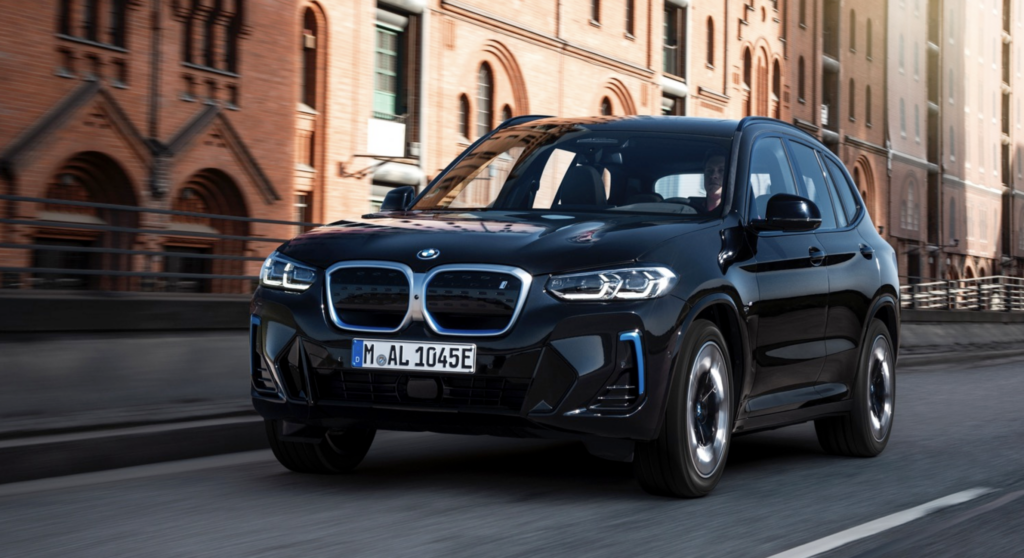
BMW iX3 Charging Guide
The BMW iX3 heralds a new chapter in the evolution of electric vehicles, seamlessly marrying BMW’s legacy of performance with a commitment to sustainability. As an integral part of the BMW i series, the iX3 stands as a testament to the brand’s dedication to crafting innovative, electric driving experiences. The iX3 is an all electric to the famously popular X3 4×4 which has been available since 2003.
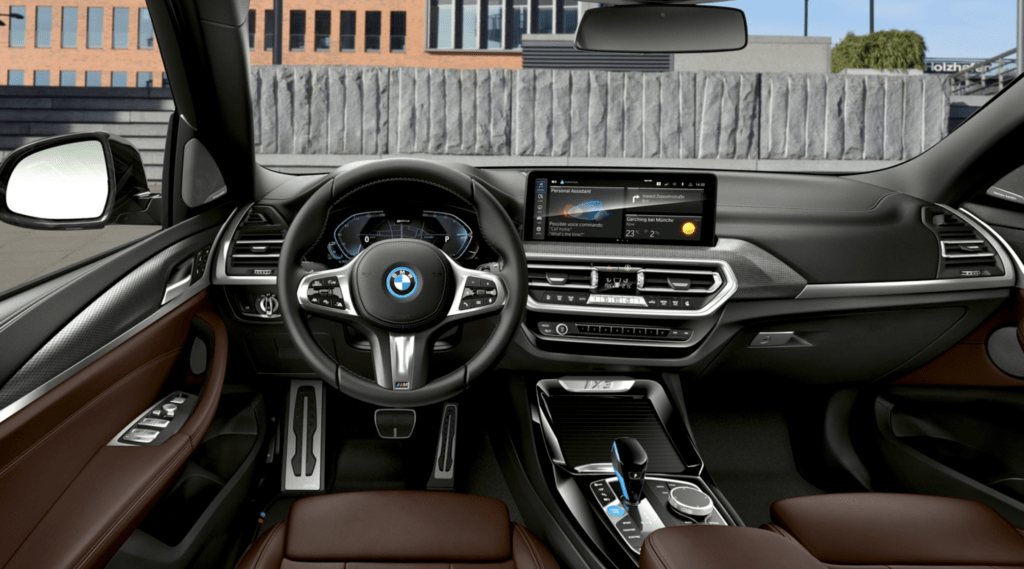
How do I charge BMW iX3?
Charging the BMW iX3 is designed for convenience and adaptability. Most iX3 owners opt for conveniently charging their iX3 at home using a Level 2 charger. This provides a practical solution for daily EV charging needs, allowing the vehicle to be ready for use each day.
On the move, the iX3 is compatible with public charging stations, including fast-charging options. Utilising a CCS Type 2 connector, the iX3 can take advantage of various charging networks, offering flexibility during longer journeys.
How long does it take to charge the BMW iX3?
10 hours and 34 minutes*
*Using a standard 7kWh charger, such as zappi it would take 10 hours and 34 minutes to fully charge your 74kWh battery. The BMW iX3 also has the capability to be charged on the 22kWh zappi, which would reduce this charging time down to 8 hours.
What is the range of the BMW iX3?
240 miles**The range of the BMW iX3 with the 74kWh battery, differs between 170 miles and 350 miles depending on your driving conditions and the type of road. Typically, the average range from a full charge will be around 240 miles.
How much does it cost to charge the BMW iX3?
£5.55**It could cost just £5.55 to charge the BMW iX3, with the 74kWh battery, when fully utilising off-peak charging on an Octopus Intelligent tariff, at 0.075p/kWh. In contrast, peak charging on a standard rate of 0.34p/kWh can cost £25.16 to charge up.
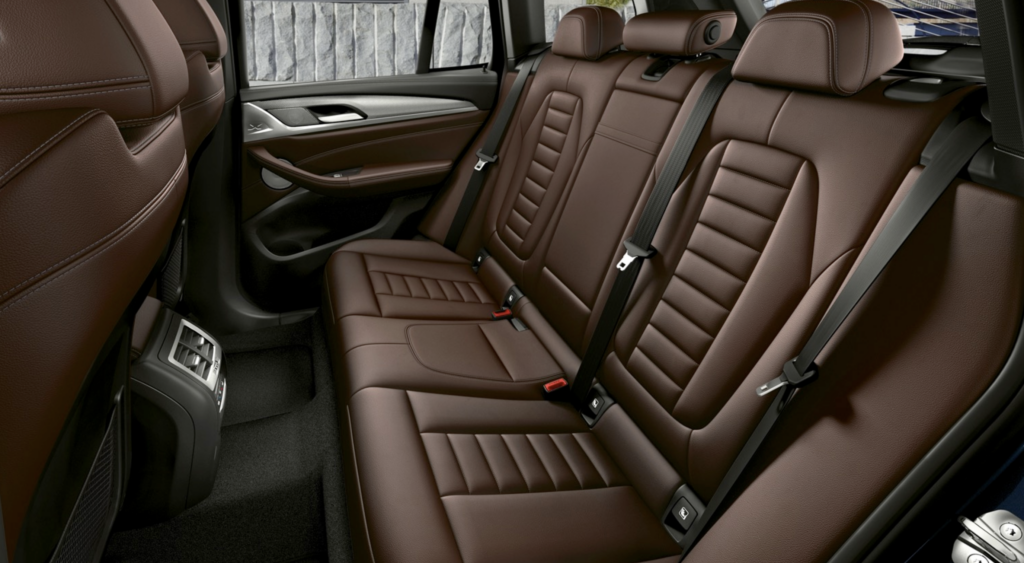
When does the BMW iX3 come out in the UK?
The iX3 has been available in the UK since 2021. However, teasers have emerged of the new 2025 remake of the car. Neue Klasse prototypes have started testing at BMW’s FIZ research and innovation centre in Munich and it’s the first time we’ve seen the modular EV in action ahead of launch in 2025.
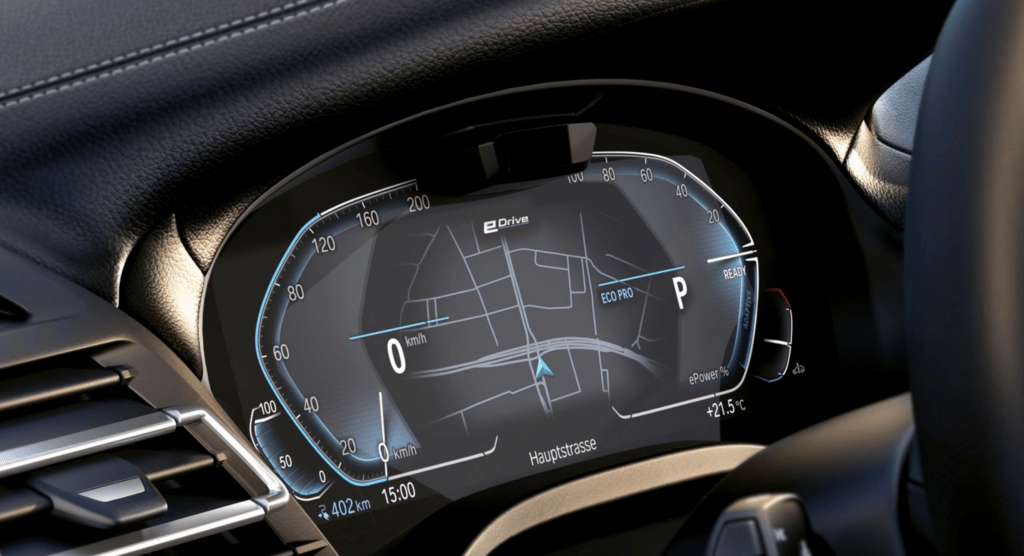
Can the BMW iX3 use a Tesla Supercharger?
The BMW iX3 does not use Tesla Superchargers. Instead, it is equipped with the CCS (Combined Charging System) Type 2 connector, offering compatibility with a variety of public charging networks. This ensures that iX3 owners have access to a wide charging infrastructure, facilitating convenient and efficient charging.
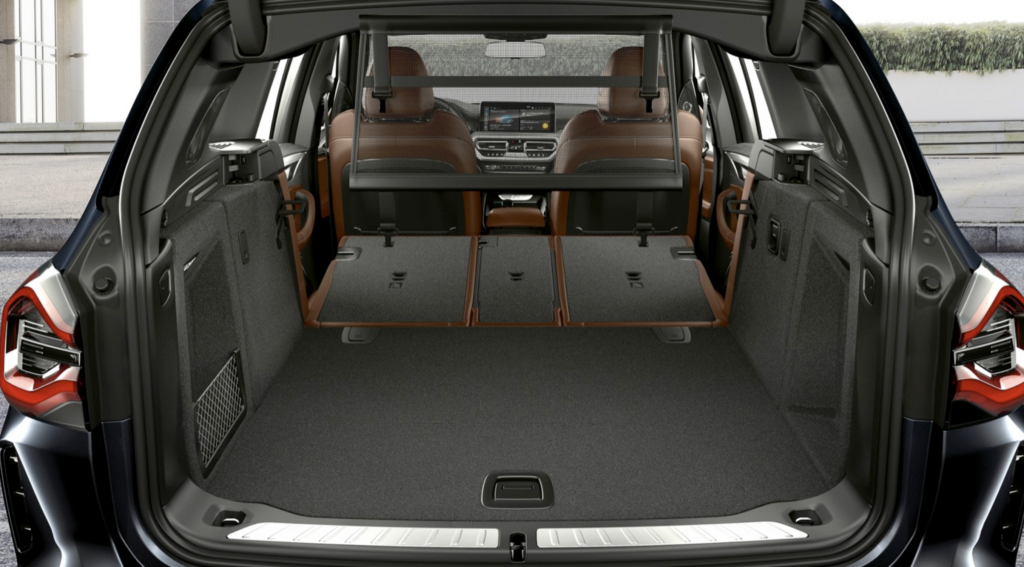
Where is the BMW iX3 built?
The BMW iX3 is manufactured at the BMW Brilliance Automotive Ltd. plant in Shenyang, China. This facility is a joint venture between BMW Group and Brilliance China Automotive Holdings Ltd., showcasing BMW’s global approach to electric vehicle production.
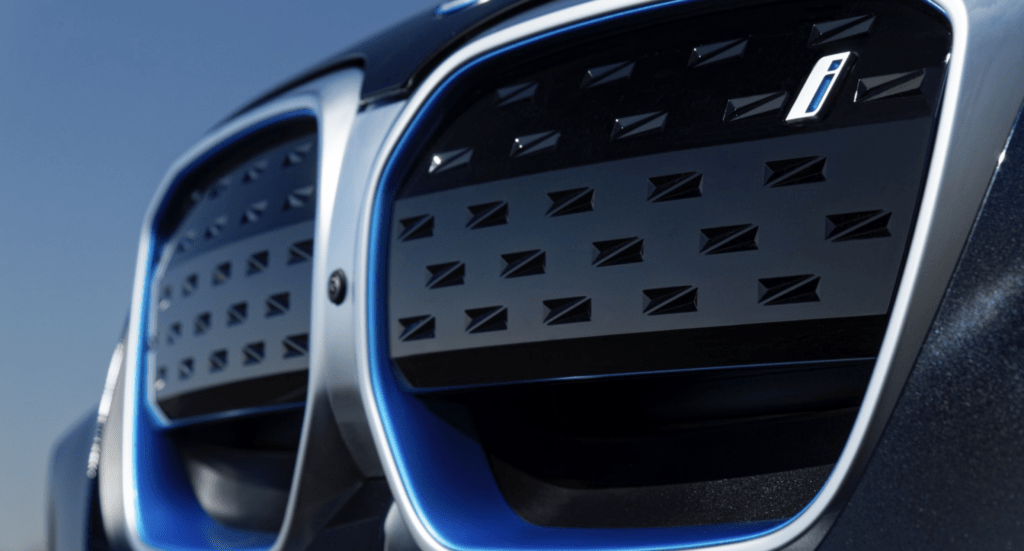
Pursuit of excellence.
The BMW iX3 represents BMW’s pursuit of excellence in the realm of electric vehicles, delivering a harmonious blend of performance, sustainability, and innovation. From charging options to manufacturing details, the iX3 is poised to redefine the electric driving experience, offering a glimpse into the future of mobility.
Similar Electric Vehicles

